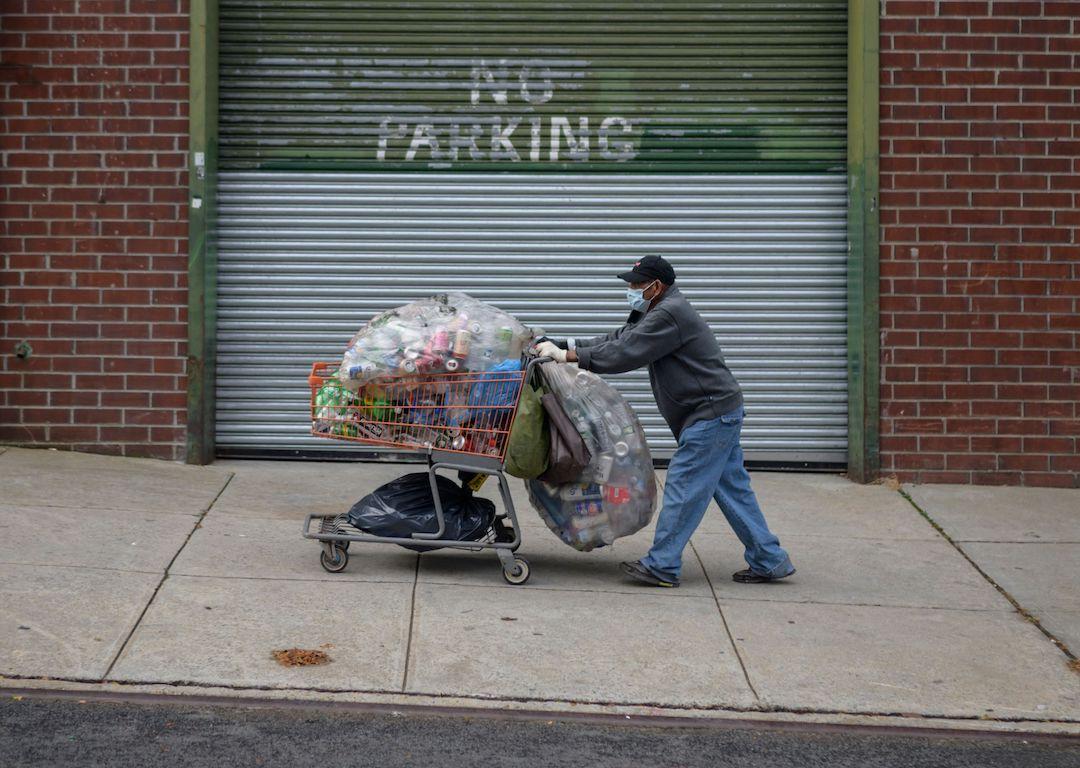
States with the most people below the poverty line
Poverty is one of America's most vexing and poignant issues—what causes it, why does it persist, how can we end it, what defines it, and just how many people are poor? Stacker ranked all states and Washington D.C. based on the percentage of their populations below the federal poverty level (FPL) threshold. Data comes from the U.S. Census Bureau's 2018 American Community five-year estimates.
The U.S. FPL is a metric first used in the 1960s that is based on the cost of a minimal food budget multiplied by three on the assumption that food comprises a third of a household's expenses. The FPL is used as a threshold for determining an individual or families' eligibility for assistance programs from SNAP benefits to Medicaid. Various social services have different caps for eligibility from 100% of the FPL or higher.
Some say 200% of the federal poverty level is a more realistic figure for covering the cost of basic needs in the United States. None of the measures captures what's known as episodic poverty, which affects workers with temporary jobs or those in the informal or gig economies.
Poverty rates in America also reveal a disturbing racial gap, with Black Americans some 2.5 times more likely to be poor than white Americans, according to the Kaiser Family Foundation. The poverty rate hovers at about a third of Black residents in Iowa, Wisconsin, Oklahoma, Arkansas, Louisiana, and Mississippi. Research generally points to causes like poor education systems, workplace discrimination, and high incarceration rates. The coronavirus has reached into that gap, with correlations between poverty and COVID-19 hitting low-income Black communities disproportionately hard. Experts say there is more likelihood of underlying medical conditions that make Black people vulnerable, such as diabetes and heart disease. Those communities tend to have less access to good health care and have higher populations of essential workers who cannot stay home and are forced to stay on the job and risk getting infected.
Keep reading to see which states have the most people below the poverty line.
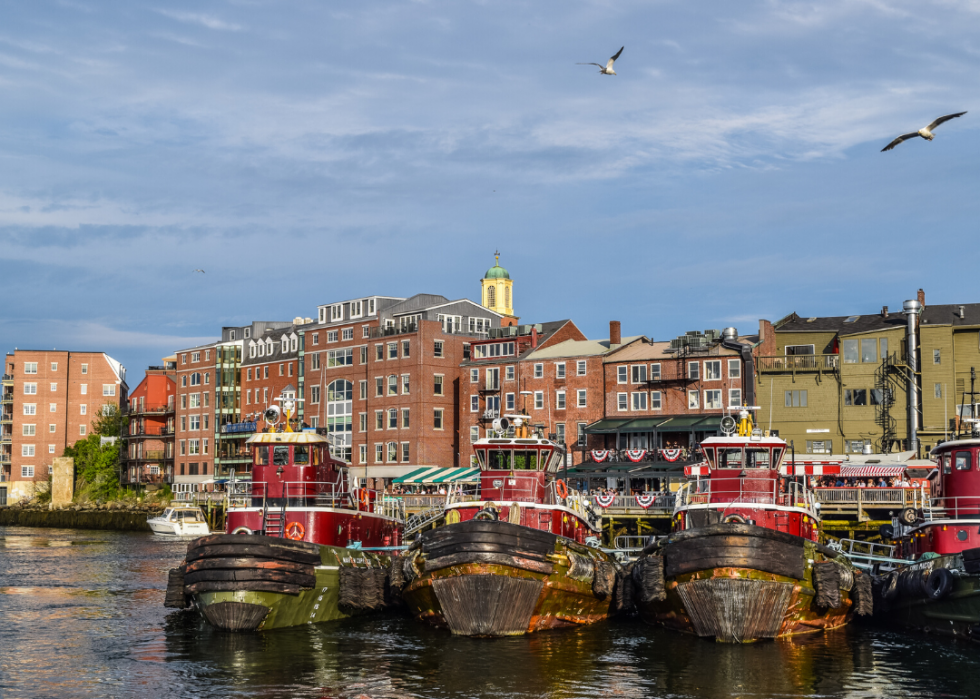
#51. New Hampshire
- Population below the poverty line: 102,352 (7.9% of state population)
--- Children ages 0-17 in poverty: 26,189 (10.2% of all children)
- Race/ethnicity poverty demographics:
--- Asian American: 3,476 (10.1% of Asian Americans in New Hampshire)
--- Black Americans: 3,626 (19.8% of Black Americans in New Hampshire)
--- Hispanics/Latinos: 8,180 (17.8% of Hispanics/Latinos in New Hampshire)
--- Native Americans/Alaskans: 258 (13.1% of Native Americans/Alaskans in New Hampshire)
--- White Americans: 84,797 (7.2% of all White Americans in New Hampshire)
Having the lowest state poverty rate masks the situation for many residents who are weighed down by New Hampshire's high housing costs and struggle to pay for necessities, according to local fiscal experts. Job growth in the state has been concentrated in low-paying sectors of health care, accommodation, and food services.
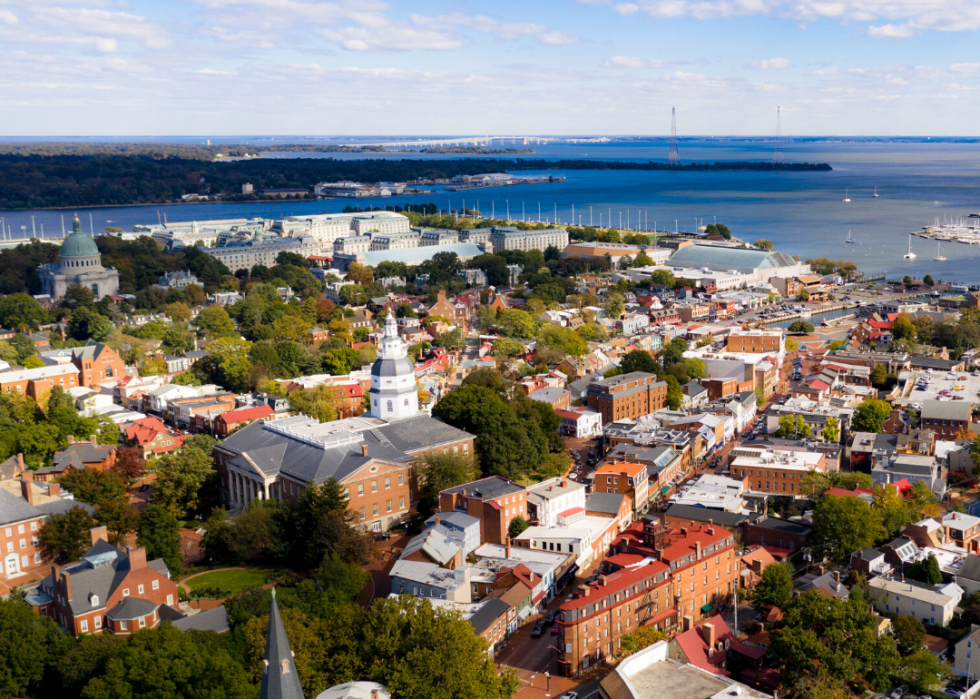
#50. Maryland
- Population below the poverty line: 553,496 (9.4% of state population)
--- Children ages 0-17 in poverty: 164,213 (12.4% of all children)
- Race/ethnicity poverty demographics:
--- Asian American: 26,703 (7.2% of Asian Americans in Maryland)
--- Black Americans: 236,497 (13.6% of Black Americans in Maryland)
--- Hispanics/Latinos: 78,042 (13.5% of Hispanics/Latinos in Maryland)
--- Native Americans/Alaskans: 2,052 (13.6% of Native Americans/Alaskans in Maryland)
--- White Americans: 193,644 (6.4% of all White Americans in Maryland)
Despite recording a low federal poverty rate, a quarter of Maryland families live below a basic survival threshold of $61,224 for a two-child family, a 2017 study by United Way found. That reflected more than a half million households in low-paying jobs like janitors and security guards. Almost half of Baltimore’s households fall below the survival line, the report said.
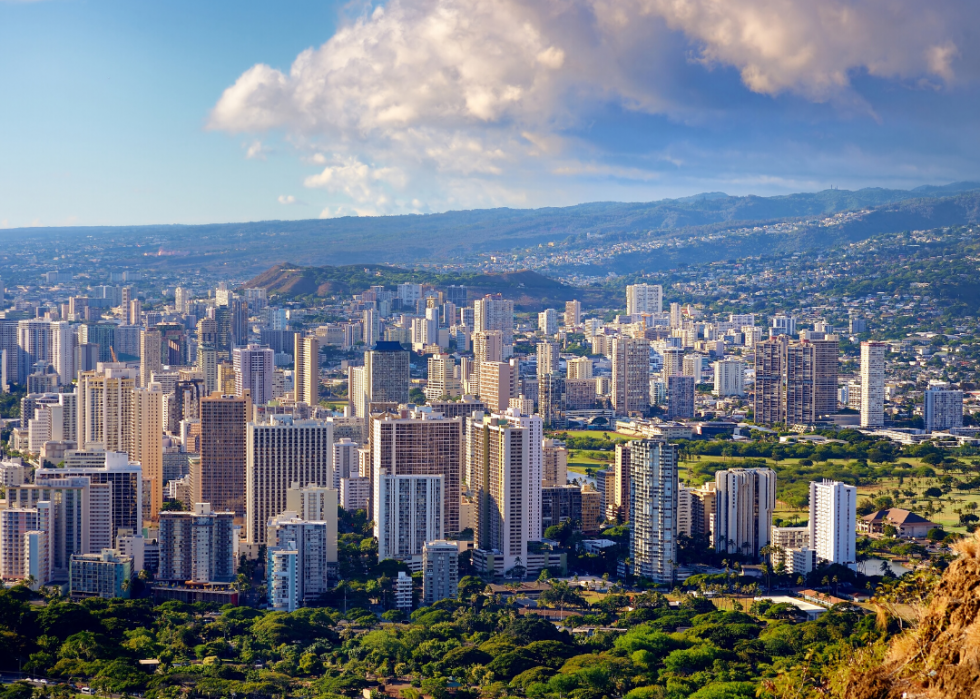
#49. Hawaii
- Population below the poverty line: 137,516 (9.9% of state population)
--- Children ages 0-17 in poverty: 37,559 (12.5% of all children)
- Race/ethnicity poverty demographics:
--- Asian American: 33,564 (6.4% of Asian Americans in Hawaii)
--- Black Americans: 2,621 (11.2% of Black Americans in Hawaii)
--- Hispanics/Latinos: 19,934 (14% of Hispanics/Latinos in Hawaii)
--- Native Americans/Alaskans: 690 (24.2% of Native Americans/Alaskans in Hawaii)
--- White Americans: 27,670 (9.2% of all White Americans in Hawaii)
Hawaii’s federal poverty rate fails to reflect the state’s cost of living, which is the highest in the nation. When expenses like utilities, grocers, child care, and transportation are factored in, Hawaii has one of the highest poverty rates in the country, data shows.
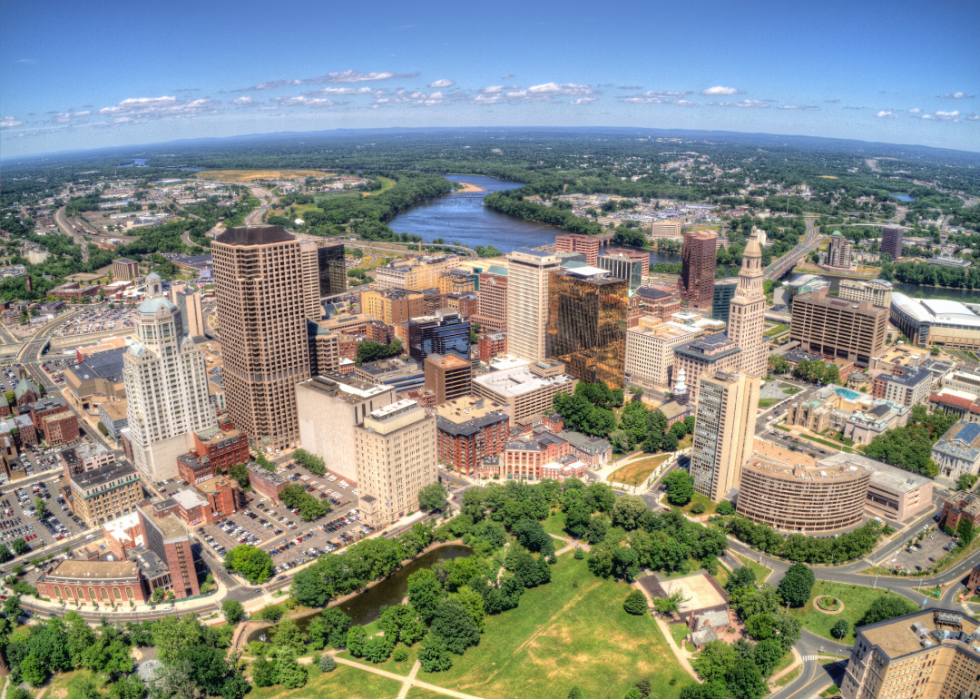
#48. Connecticut
- Population below the poverty line: 348,449 (10% of state population)
--- Children ages 0-17 in poverty: 100,097 (13.5% of all children)
- Race/ethnicity poverty demographics:
--- Asian American: 12,006 (7.8% of Asian Americans in Connecticut)
--- Black Americans: 66,722 (18.5% of Black Americans in Connecticut)
--- Hispanics/Latinos: 124,483 (22.7% of Hispanics/Latinos in Connecticut)
--- Native Americans/Alaskans: 1,570 (17% of Native Americans/Alaskans in Connecticut)
--- White Americans: 139,467 (5.9% of all White Americans in Connecticut)
Data has shown that while Connecticut’s poverty rate was low, it was on the rise, particularly among children: 1 in 5 Black children lives in areas of concentrated poverty, where more than a third of households fall below the federal poverty line, compared with 1 in 100 white children. In 2019, the state raised its minimum hourly wage to $11 from $10.10 in an effort to address its poverty rate.
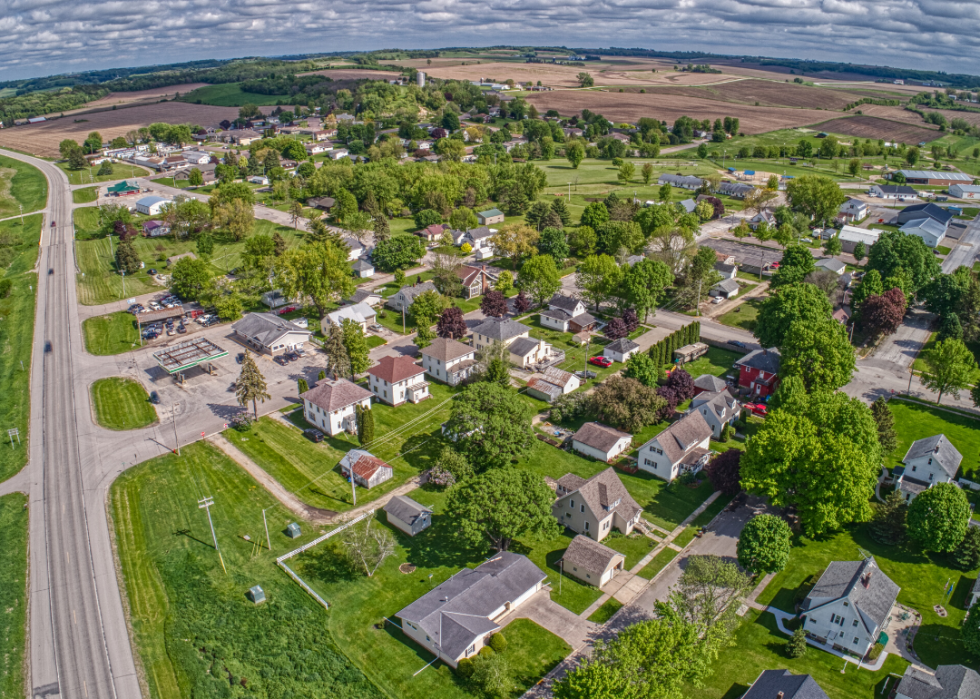
#47. Minnesota
- Population below the poverty line: 547,442 (10.1% of state population)
--- Children ages 0-17 in poverty: 163,937 (12.9% of all children)
- Race/ethnicity poverty demographics:
--- Asian American: 37,275 (14.5% of Asian Americans in Minnesota)
--- Black Americans: 100,381 (30.4% of Black Americans in Minnesota)
--- Hispanics/Latinos: 56,976 (20% of Hispanics/Latinos in Minnesota)
--- Native Americans/Alaskans: 17,260 (31.3% of Native Americans/Alaskans in Minnesota)
--- White Americans: 314,491 (7.2% of all White Americans in Minnesota)
Minnesota legislators launched a concerted effort a decade ago to end poverty with an increased minimum wage, expanded child care, affordable housing, accessible transportation, restrictions on predatory lending, and better childhood education, and the rate has dropped from 11.6% in 2010. Glaring discrepancies remain, such as more than a quarter of the state's Black and Native American residents living in poverty.
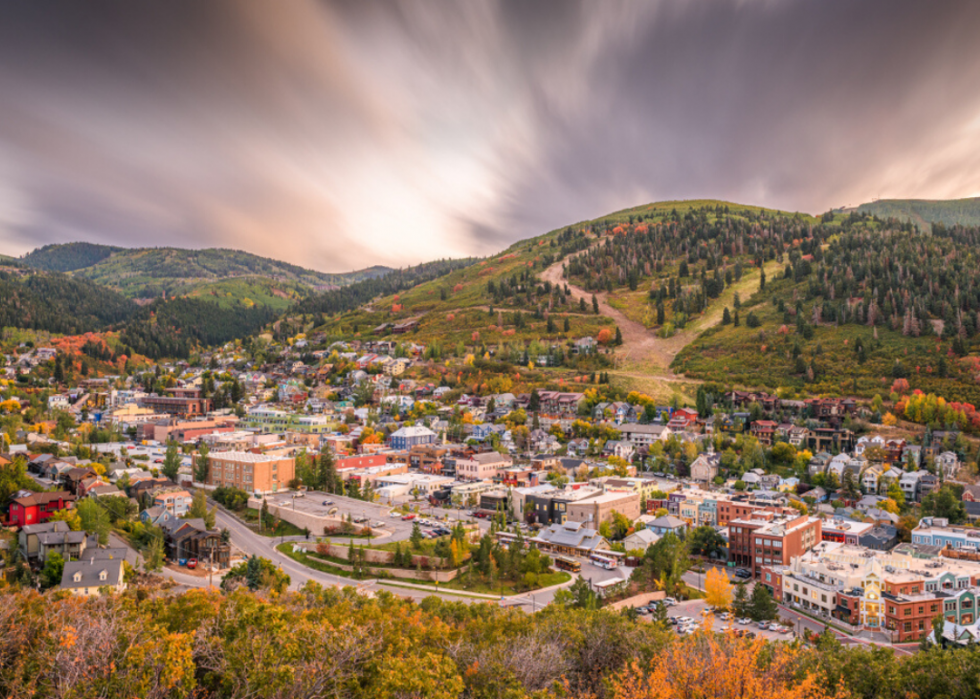
#46. Utah
- Population below the poverty line: 309,904 (10.3% of state population)
--- Children ages 0-17 in poverty: 104,533 (11.5% of all children)
- Race/ethnicity poverty demographics:
--- Asian American: 9,770 (14.3% of Asian Americans in Utah)
--- Black Americans: 8,561 (24.9% of Black Americans in Utah)
--- Hispanics/Latinos: 77,185 (18.6% of Hispanics/Latinos in Utah)
--- Native Americans/Alaskans: 9,391 (29.4% of Native Americans/Alaskans in Utah)
--- White Americans: 195,169 (8.3% of all White Americans in Utah)
Unemployment has been low in Utah, and its economy has thrived, helping to keep its poverty level down. The state has a high number of married couples with children and a small number of single parent households, which are more likely to live below poverty levels.
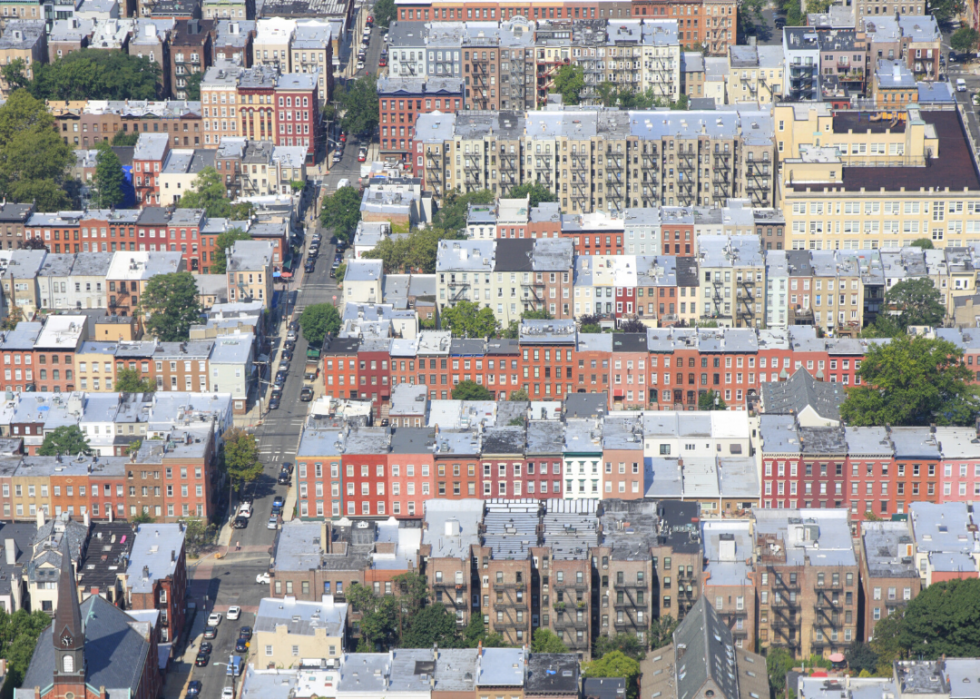
#45. New Jersey
- Population below the poverty line: 904,132 (10.4% of state population)
--- Children ages 0-17 in poverty: 288,675 (14.8% of all children)
- Race/ethnicity poverty demographics:
--- Asian American: 56,804 (6.9% of Asian Americans in New Jersey)
--- Black Americans: 209,499 (18.2% of Black Americans in New Jersey)
--- Hispanics/Latinos: 330,818 (19% of Hispanics/Latinos in New Jersey)
--- Native Americans/Alaskans: 3,524 (19.3% of Native Americans/Alaskans in New Jersey)
--- White Americans: 295,522 (6.1% of all White Americans in New Jersey)
While New Jersey’s poverty by federal standards is lower than the national average, some experts say a more accurate measure in a state with such a high cost of living uses $50,200 as the poverty line for a family of four. By that measure, more than 1 in 5 New Jersey residents, or 1.9 million people, actually live in poverty.
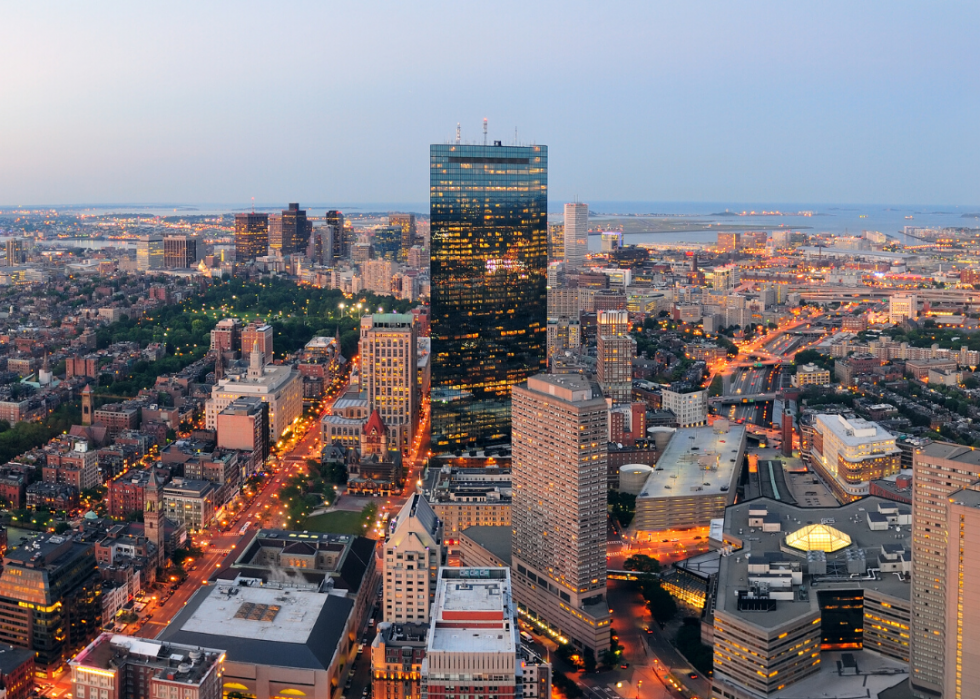
#44. Massachusetts
- Population below the poverty line: 710,305 (10.8% of state population)
--- Children ages 0-17 in poverty: 188,810 (13.9% of all children)
- Race/ethnicity poverty demographics:
--- Asian American: 57,813 (13.8% of Asian Americans in Massachusetts)
--- Black Americans: 96,509 (19.7% of Black Americans in Massachusetts)
--- Hispanics/Latinos: 203,145 (26.6% of Hispanics/Latinos in Massachusetts)
--- Native Americans/Alaskans: 3,101 (22.2% of Native Americans/Alaskans in Massachusetts)
--- White Americans: 338,177 (7.1% of all White Americans in Massachusetts)
One reason for Massachusetts’ relatively low poverty rate is education. More than 4 in 10 residents have at least a bachelor’s degree, making them qualified for a wide range of jobs and higher salaries.
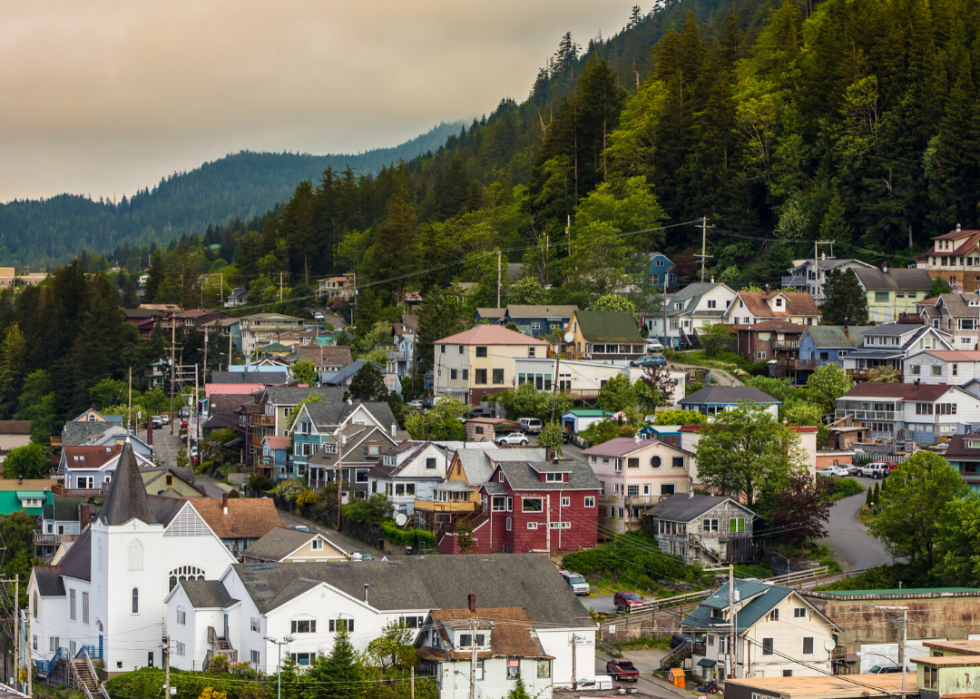
#43. Alaska
- Population below the poverty line: 77,865 (10.8% of state population)
--- Children ages 0-17 in poverty: 27,615 (15.2% of all children)
- Race/ethnicity poverty demographics:
--- Asian American: 5,831 (12.7% of Asian Americans in Alaska)
--- Black Americans: 3,916 (17.3% of Black Americans in Alaska)
--- Hispanics/Latinos: 5,447 (11.1% of Hispanics/Latinos in Alaska)
--- Native Americans/Alaskans: 24,502 (23.8% of Native Americans/Alaskans in Alaska)
--- White Americans: 30,795 (7% of all White Americans in Alaska)
Alaska’s federal poverty level is among the 10 lowest in the country, but its cost of living is among the highest, leaving many families struggling to make ends meet. A monthly energy bill can cost $500 in Fairbanks, while statewide, energy bills are typically more than half that amount. The cost of an average home in Juneau is more than a half million dollars.
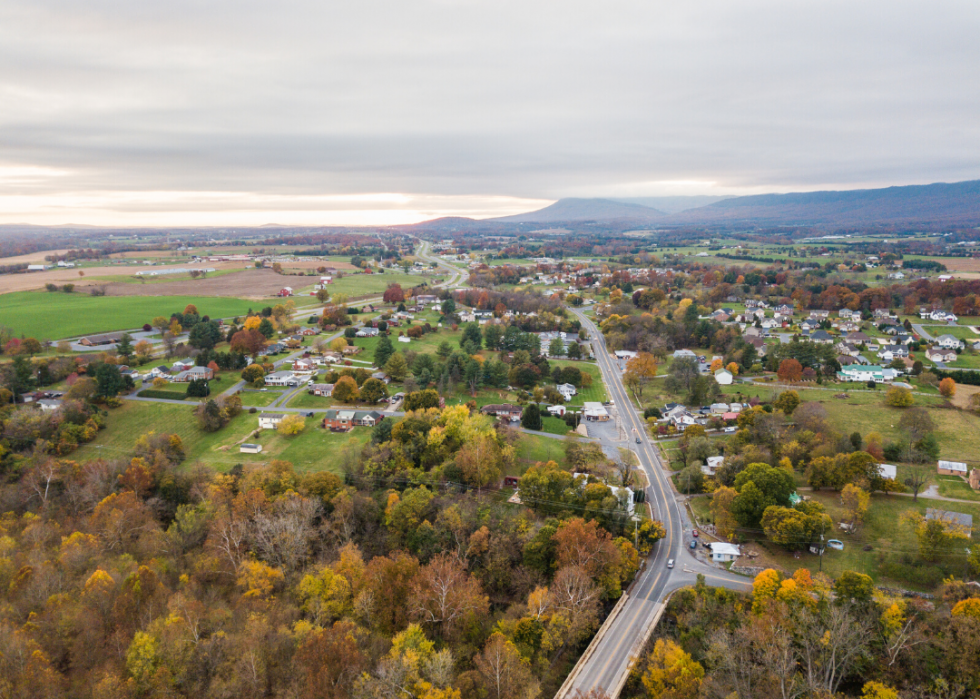
#42. Virginia
- Population below the poverty line: 893,580 (10.9% of state population)
--- Children ages 0-17 in poverty: 266,487 (14.5% of all children)
- Race/ethnicity poverty demographics:
--- Asian American: 38,738 (7.4% of Asian Americans in Virginia)
--- Black Americans: 286,807 (18.6% of Black Americans in Virginia)
--- Hispanics/Latinos: 110,252 (14.7% of Hispanics/Latinos in Virginia)
--- Native Americans/Alaskans: 2,993 (13.7% of Native Americans/Alaskans in Virginia)
--- White Americans: 426,968 (8.4% of all White Americans in Virginia)
Virginia's poverty rate has been more or less steady since 2010, hovering between 10% and 11%. But the gap between rich and poor has widened. Loudoun County, outside Washington D.C., had the nation's highest household income, while the poverty rate in Montgomery County in the Blue Ridge Mountains is nearly three times the state average and the ninth-highest poverty rate among U.S. counties.
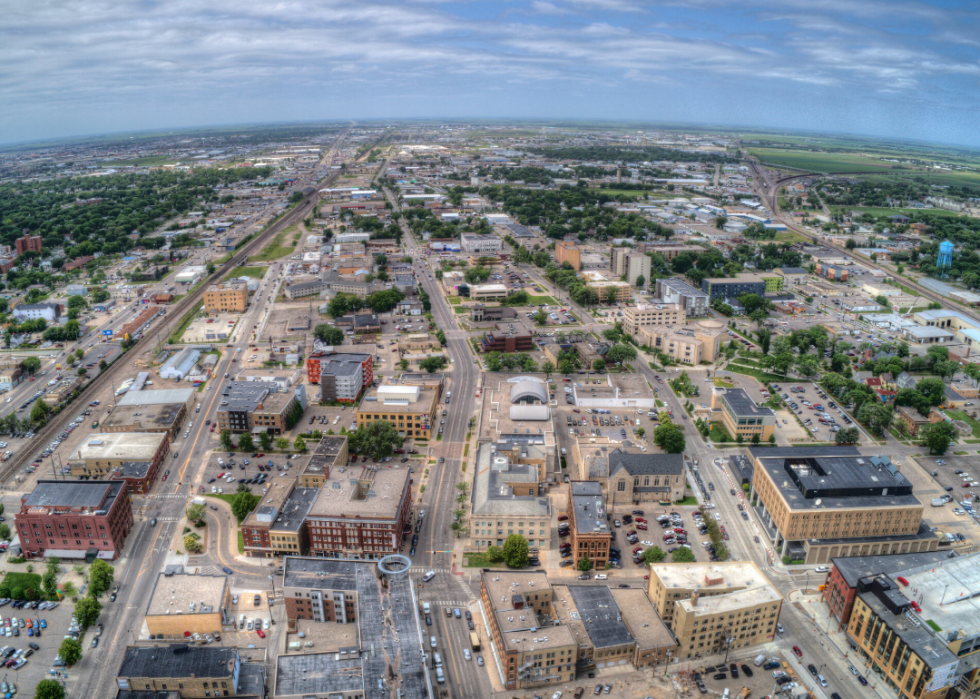
#41. North Dakota
- Population below the poverty line: 79,270 (10.9% of state population)
--- Children ages 0-17 in poverty: 20,862 (12.2% of all children)
- Race/ethnicity poverty demographics:
--- Asian American: 2,081 (19.8% of Asian Americans in North Dakota)
--- Black Americans: 5,106 (26.4% of Black Americans in North Dakota)
--- Hispanics/Latinos: 4,668 (18.4% of Hispanics/Latinos in North Dakota)
--- Native Americans/Alaskans: 13,337 (35.1% of Native Americans/Alaskans in North Dakota)
--- White Americans: 51,663 (8.3% of all White Americans in North Dakota)
People who are poor in North Dakota face high housing costs and high transportation costs. Among Native Americans, who are 5% of the state population, the poverty rate is three times higher, and nearly half of Native American children live in poverty.
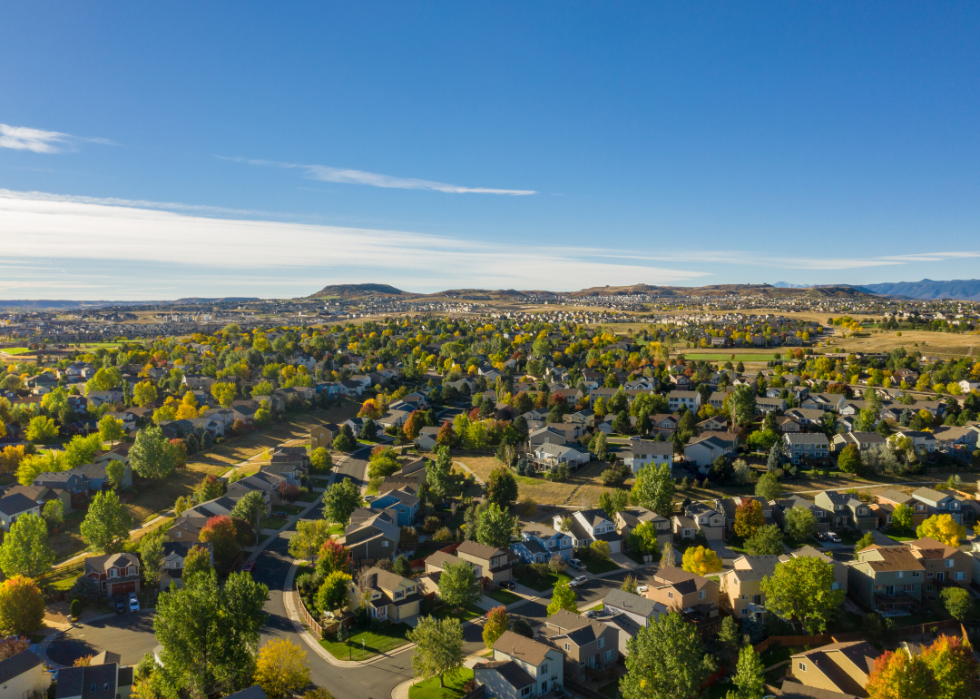
#40. Colorado
- Population below the poverty line: 590,504 (10.9% of state population)
--- Children ages 0-17 in poverty: 168,248 (13.5% of all children)
- Race/ethnicity poverty demographics:
--- Asian American: 19,337 (11.4% of Asian Americans in Colorado)
--- Black Americans: 40,526 (18.7% of Black Americans in Colorado)
--- Hispanics/Latinos: 204,322 (17.6% of Hispanics/Latinos in Colorado)
--- Native Americans/Alaskans: 10,509 (20.3% of Native Americans/Alaskans in Colorado)
--- White Americans: 303,462 (8.2% of all White Americans in Colorado)
The poverty level may be below 11%, but more than a quarter of households in Colorado cannot afford basics like food, housing, child care, and transportation, according to a 2018 report by the Colorado Center on Law and Policy. Two-thirds of those households live above the official poverty line, leaving them unable to access many assistance programs.
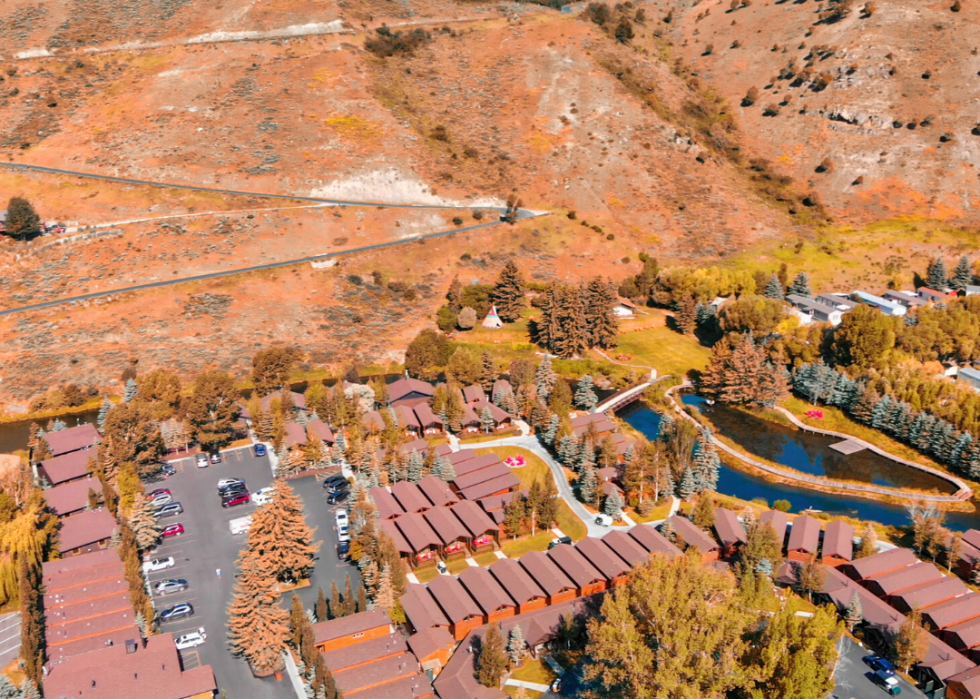
#39. Wyoming
- Population below the poverty line: 63,311 (11.1% of state population)
--- Children ages 0-17 in poverty: 17,332 (12.8% of all children)
- Race/ethnicity poverty demographics:
--- Asian American: 850 (18.5% of Asian Americans in Wyoming)
--- Black Americans: 630 (12.4% of Black Americans in Wyoming)
--- Hispanics/Latinos: 11,698 (21.2% of Hispanics/Latinos in Wyoming)
--- Native Americans/Alaskans: 3,234 (24.3% of Native Americans/Alaskans in Wyoming)
--- White Americans: 46,000 (9.6% of all White Americans in Wyoming)
Besides the federal poverty level, more than 35,000 households—meaning over 100,000 people—in Wyoming are estimated to lack enough income to meet basic needs. Of those households, about 1 in 5 are married couples with children, but almost 3 in 5 are headed by single mothers.
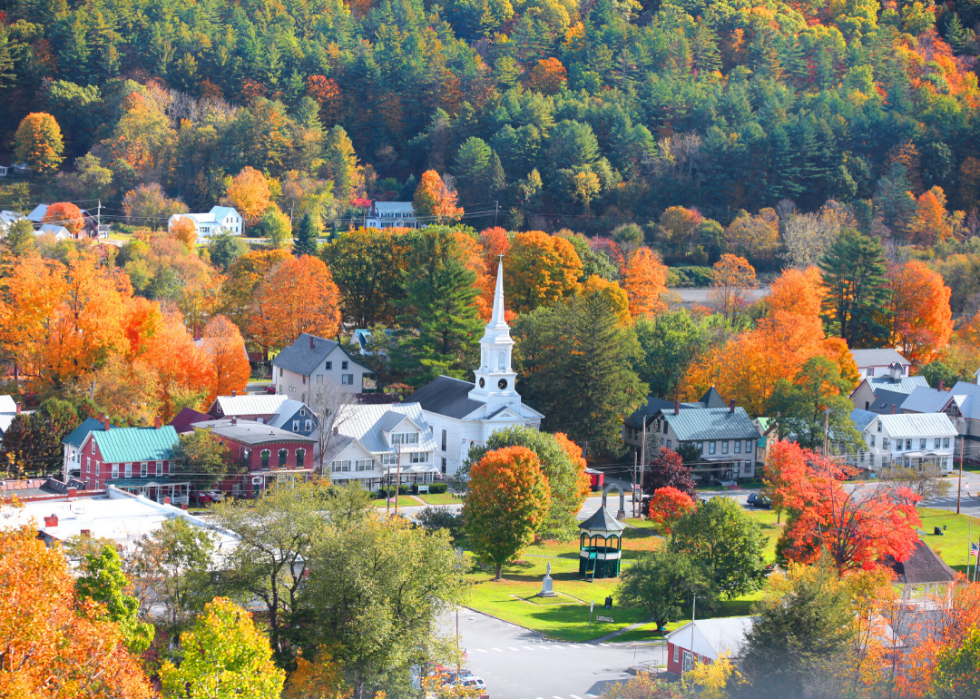
#38. Vermont
- Population below the poverty line: 67,034 (11.2% of state population)
--- Children ages 0-17 in poverty: 16,282 (14.1% of all children)
- Race/ethnicity poverty demographics:
--- Asian American: 1,499 (15.4% of Asian Americans in Vermont)
--- Black Americans: 1,663 (23.8% of Black Americans in Vermont)
--- Hispanics/Latinos: 1,692 (16.2% of Hispanics/Latinos in Vermont)
--- Native Americans/Alaskans: 359 (17.6% of Native Americans/Alaskans in Vermont)
--- White Americans: 59,717 (10.7% of all White Americans in Vermont)
Single-parent families struggle most in Vermont, and less than a third with one child have enough income to cover their basic needs. Also, the gap between rich and poor is wide. In one recent 10-year period, the average income of the top 5% of earners rose 42%. Meanwhile, among the bottom 20% of earners, the average income rose 6%.
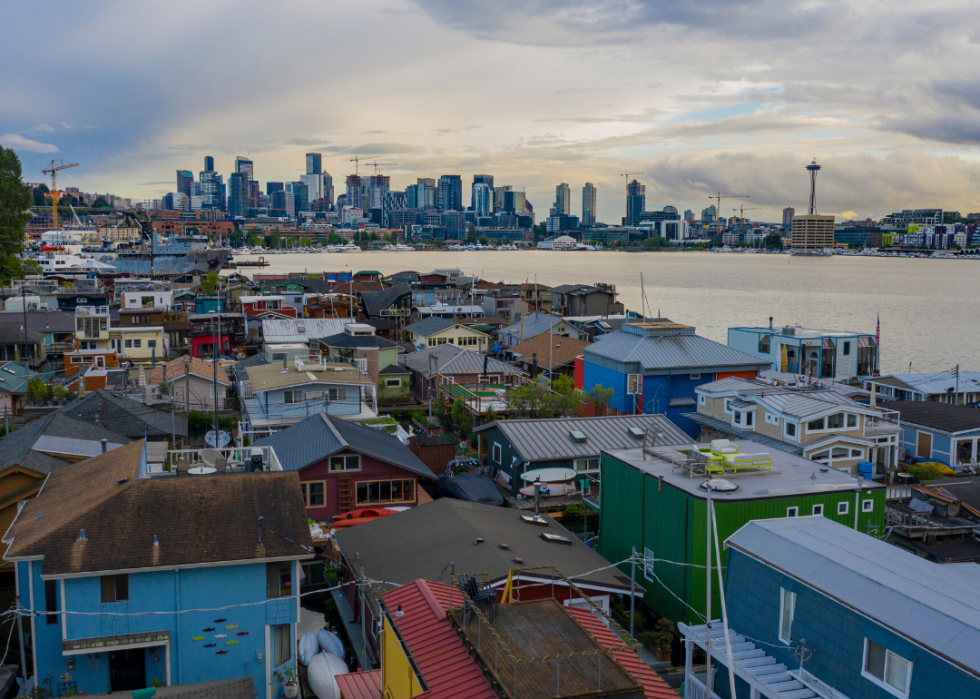
#37. Washington
- Population below the poverty line: 821,621 (11.5% of state population)
--- Children ages 0-17 in poverty: 235,193 (14.6% of all children)
- Race/ethnicity poverty demographics:
--- Asian American: 60,707 (10.1% of Asian Americans in Washington)
--- Black Americans: 56,045 (21.5% of Black Americans in Washington)
--- Hispanics/Latinos: 174,965 (19.6% of Hispanics/Latinos in Washington)
--- Native Americans/Alaskans: 22,383 (24.4% of Native Americans/Alaskans in Washington)
--- White Americans: 458,859 (9.3% of all White Americans in Washington)
The poverty rate in Washington has been relatively steady since the 1990s, with a jump linked to the 2008 recession. The rate among elderly residents has fallen significantly, from more than 1 in 5 in 1969 to about 1 in 14, along national trends due to expanded Social Security and Medicare benefits.
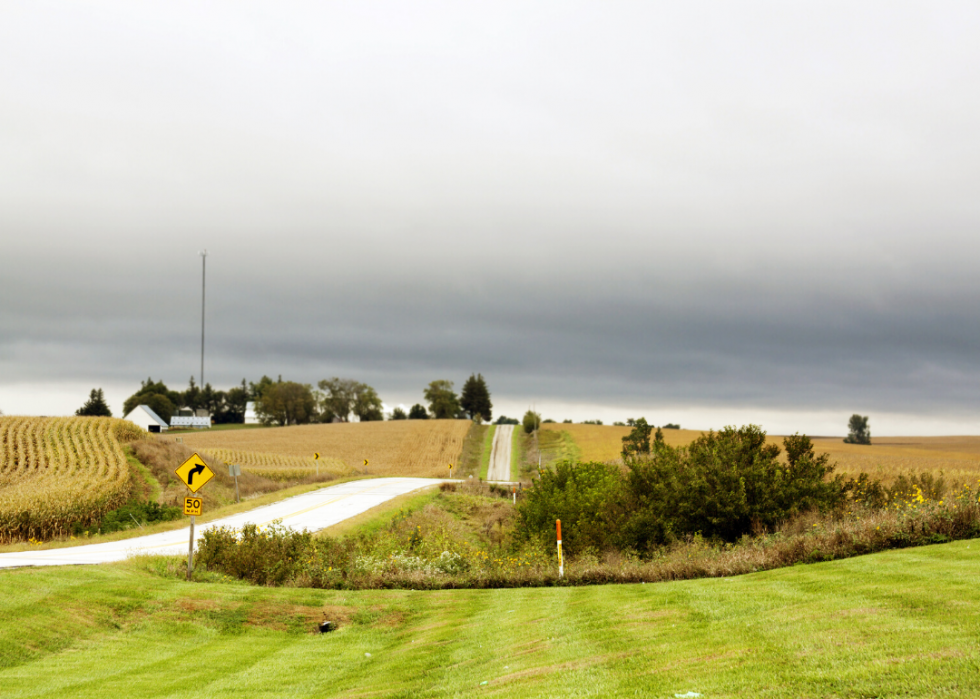
#36. Nebraska
- Population below the poverty line: 213,790 (11.6% of state population)
--- Children ages 0-17 in poverty: 68,495 (14.8% of all children)
- Race/ethnicity poverty demographics:
--- Asian American: 7,718 (18.2% of Asian Americans in Nebraska)
--- Black Americans: 23,326 (27.1% of Black Americans in Nebraska)
--- Hispanics/Latinos: 42,749 (21.6% of Hispanics/Latinos in Nebraska)
--- Native Americans/Alaskans: 5,117 (31% of Native Americans/Alaskans in Nebraska)
--- White Americans: 128,477 (8.7% of all White Americans in Nebraska)
Nebraska’s poverty rate has been below that of the rest of the country for the last 15 years. Its counties with high poverty rates have small populations, and six of its counties have what is called persistent poverty—rates higher than the rest of the country also for the last 15 years.
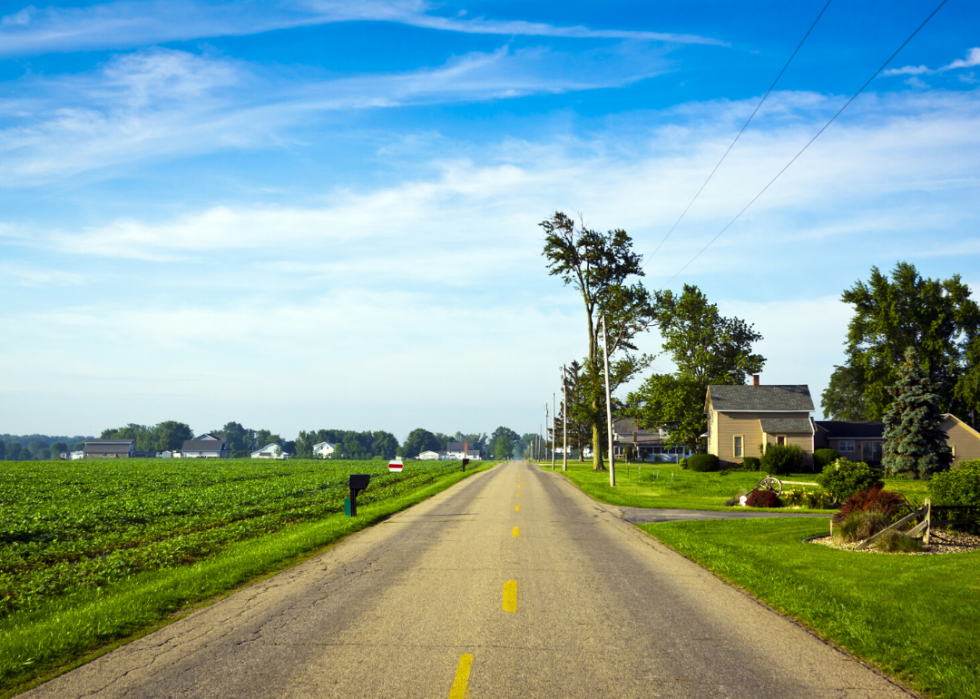
#35. Iowa
- Population below the poverty line: 353,634 (11.7% of state population)
--- Children ages 0-17 in poverty: 101,496 (14.2% of all children)
- Race/ethnicity poverty demographics:
--- Asian American: 12,407 (17% of Asian Americans in Iowa)
--- Black Americans: 34,056 (33.3% of Black Americans in Iowa)
--- Hispanics/Latinos: 38,719 (21.8% of Hispanics/Latinos in Iowa)
--- Native Americans/Alaskans: 2,693 (24.6% of Native Americans/Alaskans in Iowa)
--- White Americans: 253,500 (9.7% of all White Americans in Iowa)
Poverty in Iowa illustrates the role and significance of education and decent wages. Only about a third of working Iowa residents are equipped with the credentials and skills, such as a high school diploma, to qualify for the mid-skilled jobs that comprise about 55% of the state’s employment.
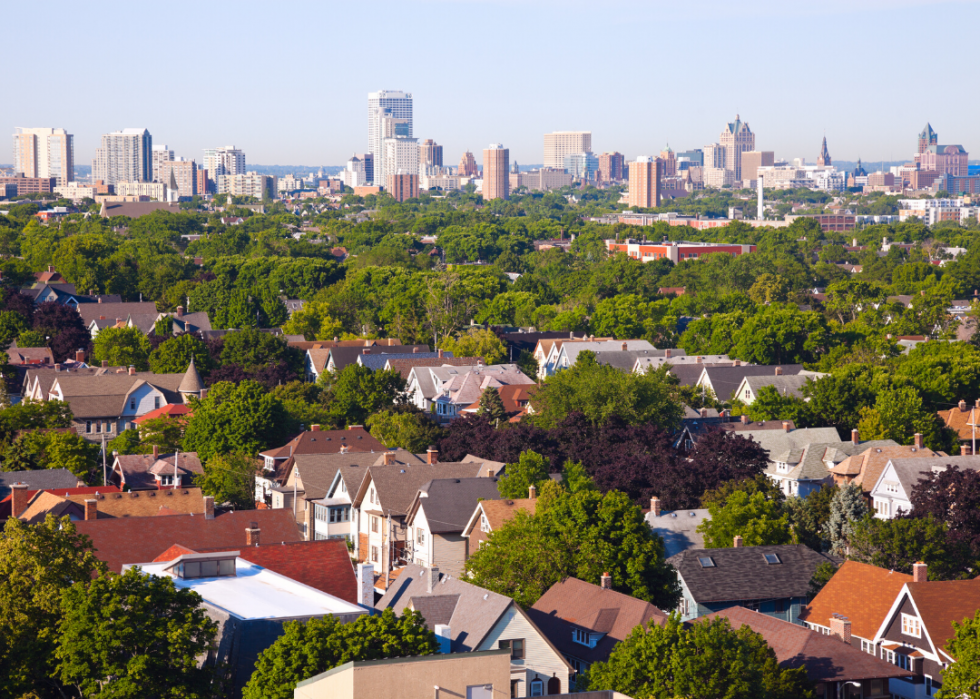
#34. Wisconsin
- Population below the poverty line: 668,220 (11.9% of state population)
--- Children ages 0-17 in poverty: 200,608 (15.9% of all children)
- Race/ethnicity poverty demographics:
--- Asian American: 27,407 (17.6% of Asian Americans in Wisconsin)
--- Black Americans: 114,824 (32.9% of Black Americans in Wisconsin)
--- Hispanics/Latinos: 85,596 (22.8% of Hispanics/Latinos in Wisconsin)
--- Native Americans/Alaskans: 12,426 (25.9% of Native Americans/Alaskans in Wisconsin)
--- White Americans: 408,173 (8.9% of all White Americans in Wisconsin)
Falling incomes are a factor in Wisconsin’s poverty. Real wages in many of the state’s low-skilled jobs like waiting tables, food preparation, maids, fast-food workers, and janitors were lower in 2017 than they were in 2001. Also, those kinds of jobs offer less opportunity for increasing hours to make more money due to a lack of affordable child care.
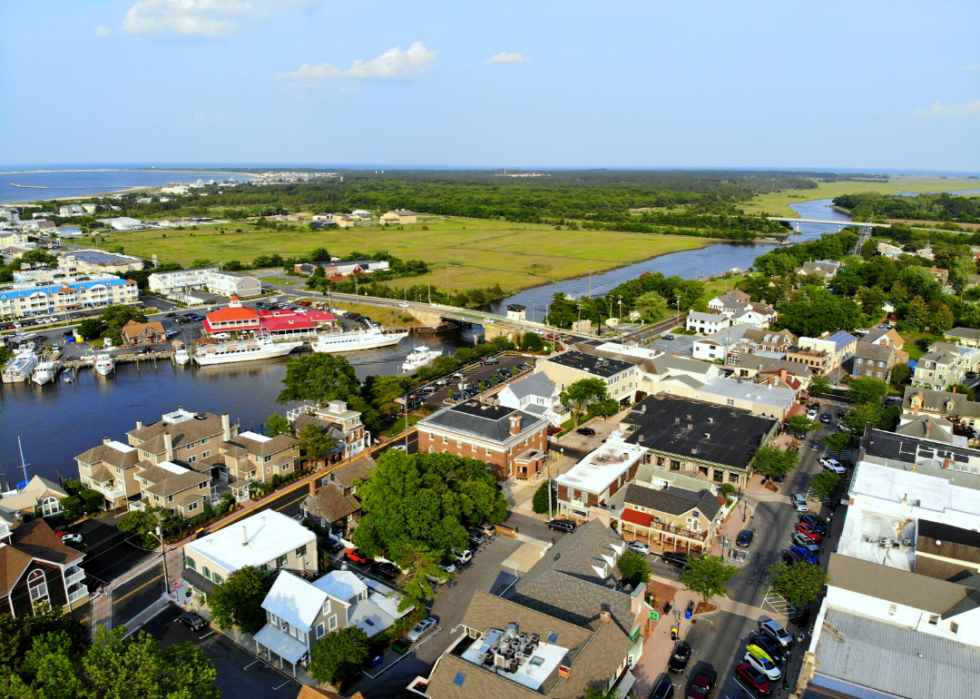
#33. Delaware
- Population below the poverty line: 109,798 (11.9% of state population)
--- Children ages 0-17 in poverty: 35,072 (17.6% of all children)
- Race/ethnicity poverty demographics:
--- Asian American: 3,461 (9.5% of Asian Americans in Delaware)
--- Black Americans: 37,967 (18.9% of Black Americans in Delaware)
--- Hispanics/Latinos: 17,928 (21.3% of Hispanics/Latinos in Delaware)
--- Native Americans/Alaskans: 765 (22.6% of Native Americans/Alaskans in Delaware)
--- White Americans: 46,238 (7.9% of all White Americans in Delaware)
The largest city in Delaware, Wilmington, is its poorest, marked by a lack of jobs and low wages. More than 1 in 4 children age 5 or younger in Delaware were living in poverty, roughly double the number of adults, as of 2017.
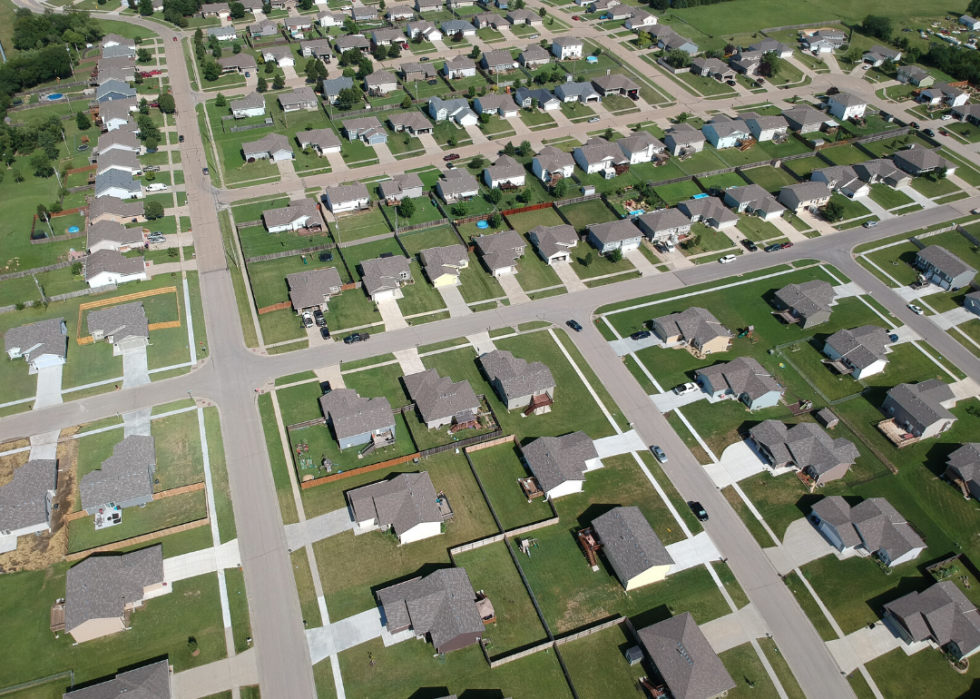
#32. Kansas
- Population below the poverty line: 350,280 (12.4% of state population)
--- Children ages 0-17 in poverty: 109,747 (15.6% of all children)
- Race/ethnicity poverty demographics:
--- Asian American: 11,929 (14.6% of Asian Americans in Kansas)
--- Black Americans: 39,105 (24.6% of Black Americans in Kansas)
--- Hispanics/Latinos: 69,233 (20.8% of Hispanics/Latinos in Kansas)
--- Native Americans/Alaskans: 4,533 (20.2% of Native Americans/Alaskans in Kansas)
--- White Americans: 211,216 (9.8% of all White Americans in Kansas)
Of the children who live in poverty in Kansas, about half live in areas of concentrated poverty, defined as somewhere with more than a third of households below the poverty line. Experts say children who live in concentrated poverty are more likely to lack family support or have health problems tied to stress.

#31. Maine
- Population below the poverty line: 161,743 (12.5% of state population)
--- Children ages 0-17 in poverty: 40,543 (16.3% of all children)
- Race/ethnicity poverty demographics:
--- Asian American: 1,574 (11.3% of Asian Americans in Maine)
--- Black Americans: 6,067 (36.6% of Black Americans in Maine)
--- Hispanics/Latinos: 4,208 (20.8% of Hispanics/Latinos in Maine)
--- Native Americans/Alaskans: 2,764 (34.4% of Native Americans/Alaskans in Maine)
--- White Americans: 141,005 (11.6% of all White Americans in Maine)
In Maine, while the federal poverty rate is 12.5%, it is dramatically higher using the Census Bureau’s broader Supplemental Poverty Measure, which includes factors such as medical expenses and child-care costs. By that measure, more than 40% of Maine residents are poor or defined as low-income, making less than 200% of the federal poverty level.
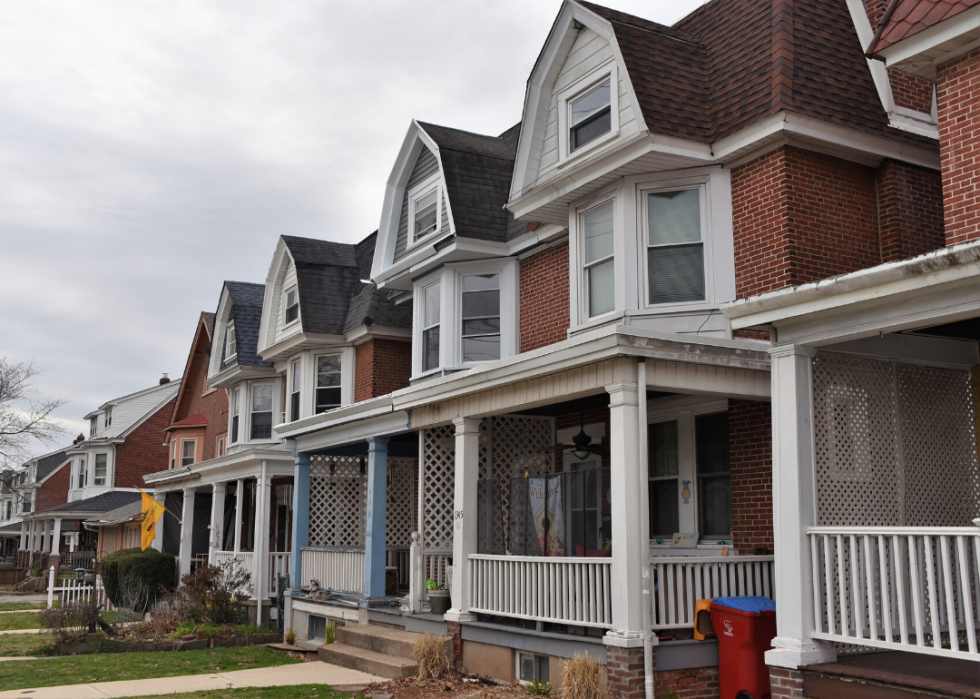
#30. Pennsylvania
- Population below the poverty line: 1,578,949 (12.8% of state population)
--- Children ages 0-17 in poverty: 475,463 (18.1% of all children)
- Race/ethnicity poverty demographics:
--- Asian American: 59,228 (14.3% of Asian Americans in Pennsylvania)
--- Black Americans: 360,801 (26.9% of Black Americans in Pennsylvania)
--- Hispanics/Latinos: 255,905 (29.4% of Hispanics/Latinos in Pennsylvania)
--- Native Americans/Alaskans: 6,221 (26.6% of Native Americans/Alaskans in Pennsylvania)
--- White Americans: 867,148 (9.1% of all White Americans in Pennsylvania)
Poor households in Pennsylvania tend to have little money left once they pay their rent. More than half of those earning less than $20,000 spent more than half of their yearly incomes on rent, according to 2017 U.S. Census Bureau data. The poorest city in Pennsylvania is Johnstown, once a thriving steel town, in highlands east of Pittsburgh. More than 4 in 10 households there receive food stamps, a rate more than three times higher than the rest of the state.
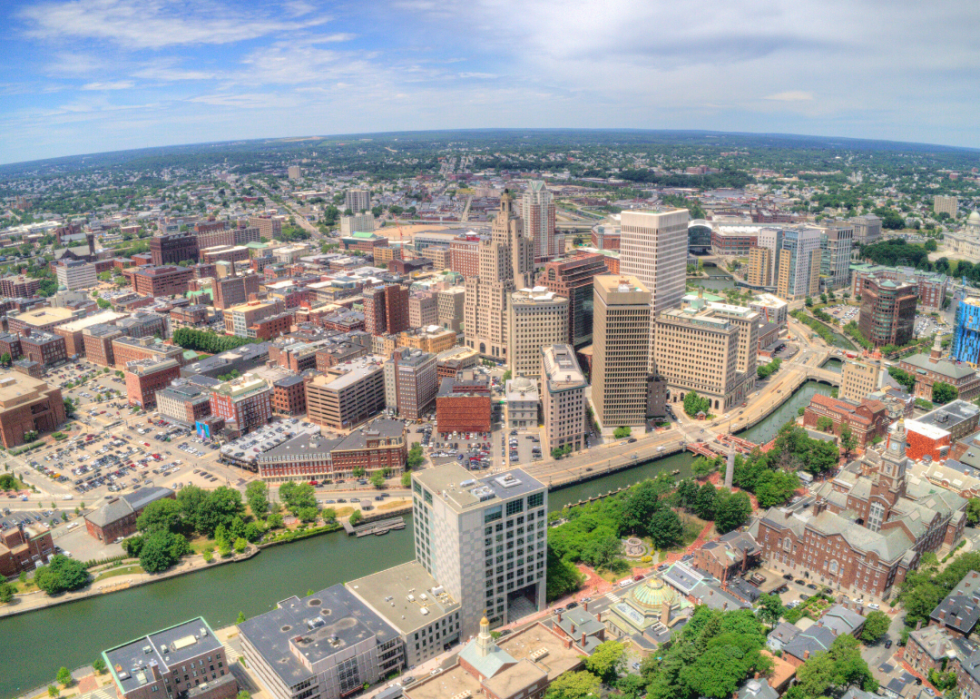
#29. Rhode Island
- Population below the poverty line: 133,055 (13.1% of state population)
--- Children ages 0-17 in poverty: 37,402 (18.2% of all children)
- Race/ethnicity poverty demographics:
--- Asian American: 5,290 (15.9% of Asian Americans in Rhode Island)
--- Black Americans: 14,120 (21.5% of Black Americans in Rhode Island)
--- Hispanics/Latinos: 41,836 (27.1% of Hispanics/Latinos in Rhode Island)
--- Native Americans/Alaskans: 1,847 (35.2% of Native Americans/Alaskans in Rhode Island)
--- White Americans: 66,800 (9% of all White Americans in Rhode Island)
New England’s highest poverty rate is found in Rhode Island. Experts say the state has low-wage jobs that leave many people short of enough money for basics: 1 in 8 households could not afford groceries, according to U.S. Department of Agriculture 2017 data.
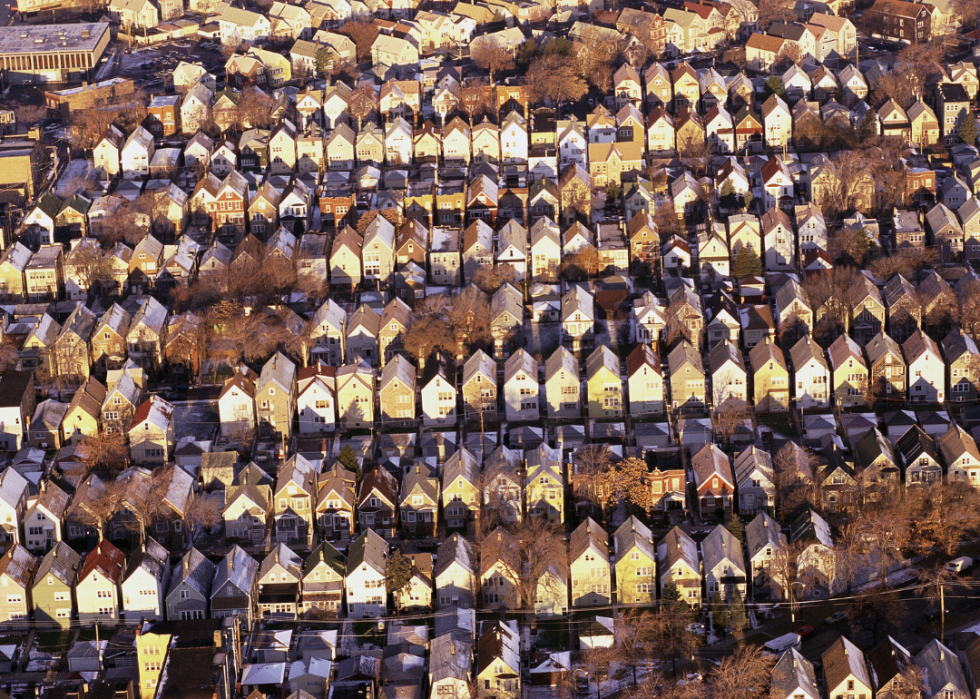
#28. Illinois
- Population below the poverty line: 1,635,603 (13.1% of state population)
--- Children ages 0-17 in poverty: 521,045 (18.1% of all children)
- Race/ethnicity poverty demographics:
--- Asian American: 77,220 (11.4% of Asian Americans in Illinois)
--- Black Americans: 477,883 (27.4% of Black Americans in Illinois)
--- Hispanics/Latinos: 366,139 (17.1% of Hispanics/Latinos in Illinois)
--- Native Americans/Alaskans: 5,077 (16.3% of Native Americans/Alaskans in Illinois)
--- White Americans: 676,492 (8.8% of all White Americans in Illinois)
Poverty levels among children in Illinois have stayed roughly the same for the last three decades. The rate of poverty among Black and Latino children is more than twice the rate among the state’s white children. The number of Latino children in Illinois has doubled since 1990.
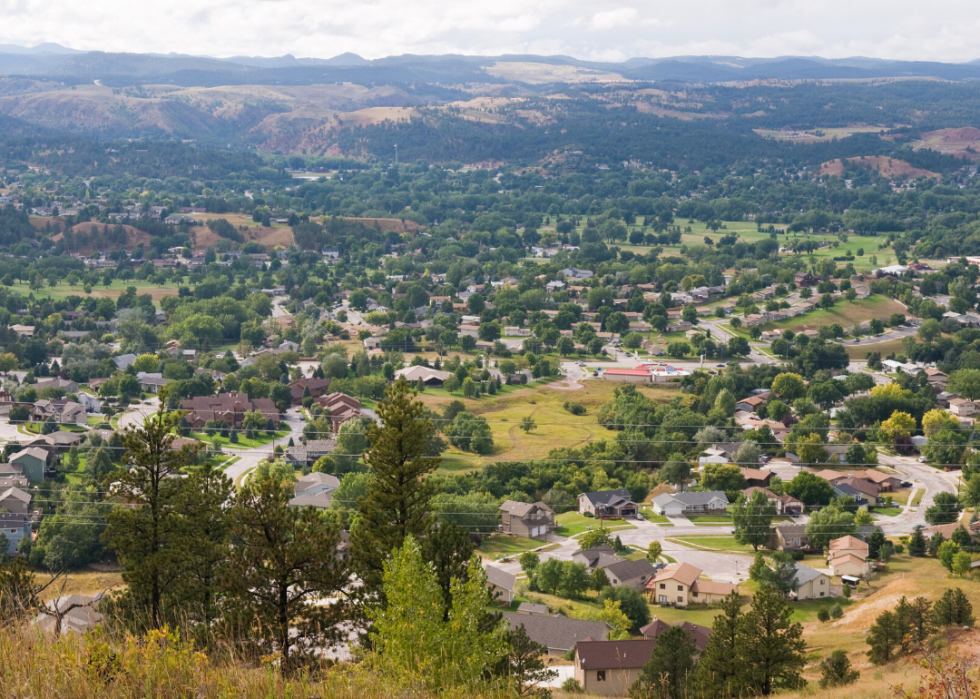
#27. South Dakota
- Population below the poverty line: 113,144 (13.6% of state population)
--- Children ages 0-17 in poverty: 36,999 (17.8% of all children)
- Race/ethnicity poverty demographics:
--- Asian American: 2,430 (19.8% of Asian Americans in South Dakota)
--- Black Americans: 4,071 (27.1% of Black Americans in South Dakota)
--- Hispanics/Latinos: 7,068 (23.3% of Hispanics/Latinos in South Dakota)
--- Native Americans/Alaskans: 35,398 (49.9% of Native Americans/Alaskans in South Dakota)
--- White Americans: 61,068 (8.9% of all White Americans in South Dakota)
Poverty shows a rural-urban divide in South Dakota, where more than half the population lives in rural regions. The poverty rate was 16% in rural South Dakota and 8.5% in its urban areas, according to 2018 data. Also, nearly 10% of the rural population did not finish high school, compared with about 7% in urban areas. One of the counties with the most pressing hardship levels is Oglala Lakota, on the Pine Ridge Reservation, in South Dakota, where the poverty rate hit 54% in 2018.
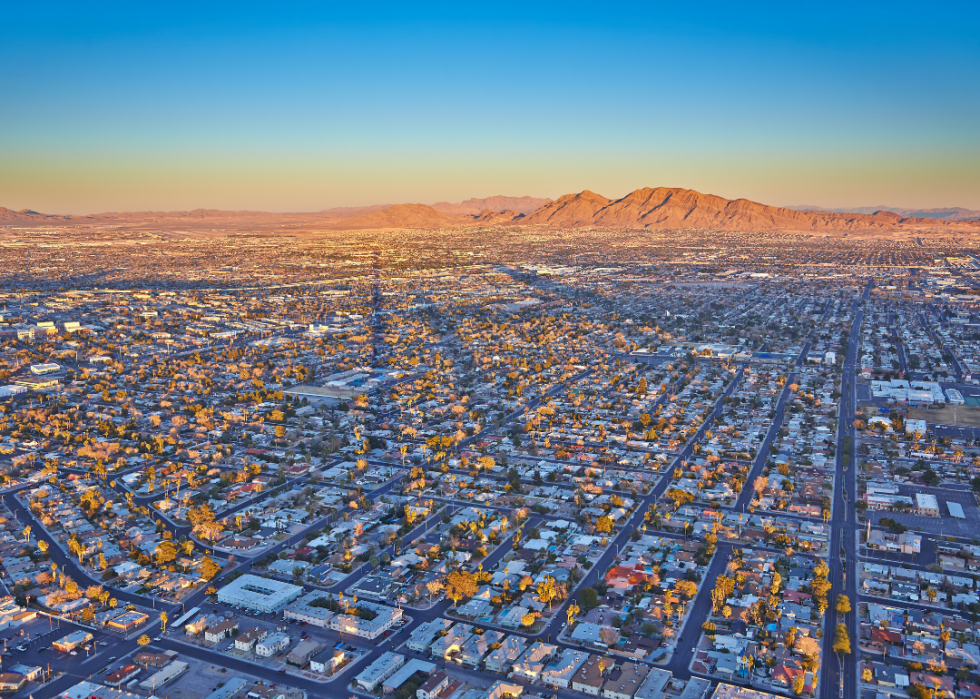
#26. Nevada
- Population below the poverty line: 393,431 (13.7% of state population)
--- Children ages 0-17 in poverty: 126,978 (19.1% of all children)
- Race/ethnicity poverty demographics:
--- Asian American: 21,389 (9.2% of Asian Americans in Nevada)
--- Black Americans: 61,786 (24.5% of Black Americans in Nevada)
--- Hispanics/Latinos: 148,046 (18% of Hispanics/Latinos in Nevada)
--- Native Americans/Alaskans: 9,210 (26.5% of Native Americans/Alaskans in Nevada)
--- White Americans: 139,675 (9.7% of all White Americans in Nevada)
In Nevada, poverty levels vary greatly by race and ethnicity. Some 11% of households of color reported falling behind in paying the bills versus about 5% of white households, according to 2017 U.S. Census data.
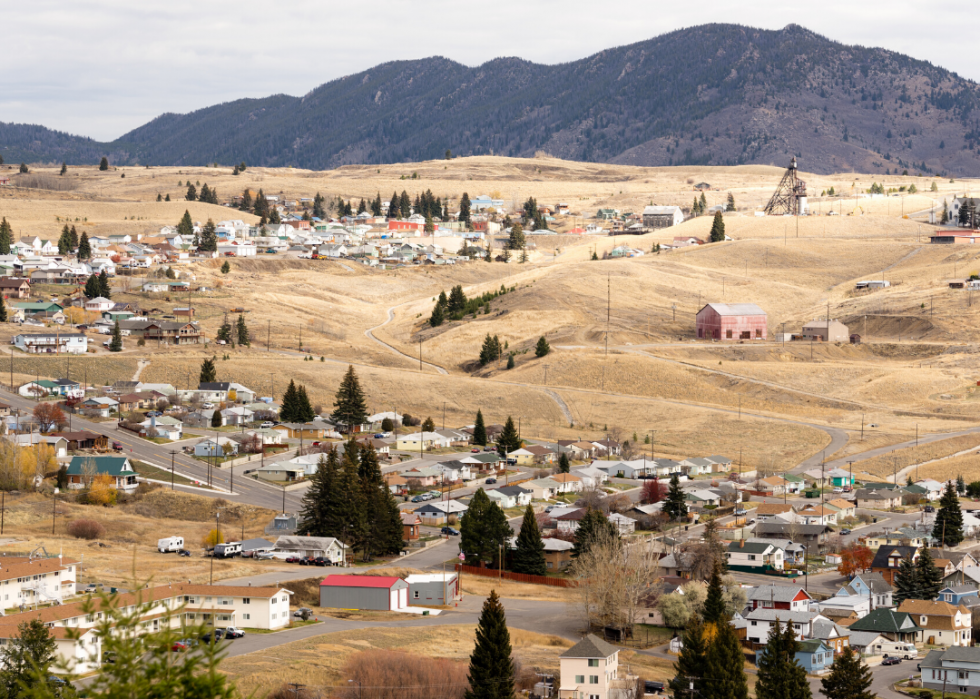
#25. Montana
- Population below the poverty line: 139,063 (13.7% of state population)
--- Children ages 0-17 in poverty: 36,433 (16.4% of all children)
- Race/ethnicity poverty demographics:
--- Asian American: 1,360 (17.8% of Asian Americans in Montana)
--- Black Americans: 889 (21.1% of Black Americans in Montana)
--- Hispanics/Latinos: 7,205 (19.2% of Hispanics/Latinos in Montana)
--- Native Americans/Alaskans: 21,945 (34.1% of Native Americans/Alaskans in Montana)
--- White Americans: 103,871 (11.8% of all White Americans in Montana)
Using the measure of low income, which is about twice the federal poverty line that incorporates basic needs, race makes a dramatic difference in Montana. Among Native Americans, 68% of children live in low-income households. Among white households, 38% of children are low-income. Among the overall population, 84% of children whose parents did not finish high school are low-income.

#24. Idaho
- Population below the poverty line: 228,882 (13.8% of state population)
--- Children ages 0-17 in poverty: 73,360 (16.9% of all children)
- Race/ethnicity poverty demographics:
--- Asian American: 3,674 (15.8% of Asian Americans in Idaho)
--- Black Americans: 3,483 (32.1% of Black Americans in Idaho)
--- Hispanics/Latinos: 44,527 (21.8% of Hispanics/Latinos in Idaho)
--- Native Americans/Alaskans: 5,509 (25.3% of Native Americans/Alaskans in Idaho)
--- White Americans: 165,537 (12.1% of all White Americans in Idaho)
More than a third of households with working adults in Idaho cannot afford the state’s cost of living, due to low wages, according to a United Way report in 2016. The report called these 37% of state households “ALICE,” for “Asset Limited, Income Constrained, Employed.”

#23. Oregon
- Population below the poverty line: 565,247 (14.1% of state population)
--- Children ages 0-17 in poverty: 153,368 (18% of all children)
- Race/ethnicity poverty demographics:
--- Asian American: 24,921 (14.6% of Asian Americans in Oregon)
--- Black Americans: 21,278 (28.7% of Black Americans in Oregon)
--- Hispanics/Latinos: 114,487 (22.3% of Hispanics/Latinos in Oregon)
--- Native Americans/Alaskans: 10,998 (24.4% of Native Americans/Alaskans in Oregon)
--- White Americans: 365,126 (12% of all White Americans in Oregon)
More than two-thirds of families living below the poverty line have one parent who works, according to the Oregon Center for Public Policy. That’s some 100,000 children in poverty with a parent who has a job. The race and gender discrepancies are vivid. Half of Black children with a parent working full time live in poverty, compared with less than a third of white children; and 1 in 4 single working mothers lives below the poverty line versus 1 in 6 single working fathers.
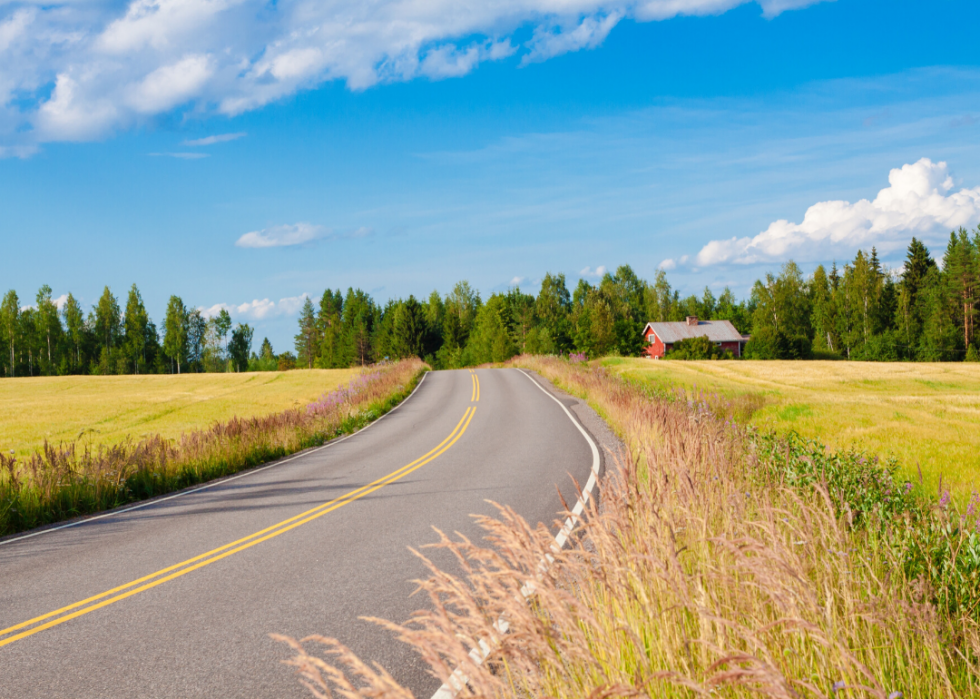
#22. Indiana
- Population below the poverty line: 908,359 (14.1% of state population)
--- Children ages 0-17 in poverty: 304,313 (19.8% of all children)
- Race/ethnicity poverty demographics:
--- Asian American: 27,124 (19.8% of Asian Americans in Indiana)
--- Black Americans: 169,401 (28.6% of Black Americans in Indiana)
--- Hispanics/Latinos: 107,538 (24.5% of Hispanics/Latinos in Indiana)
--- Native Americans/Alaskans: 2,700 (19.1% of Native Americans/Alaskans in Indiana)
--- White Americans: 572,442 (11.2% of all White Americans in Indiana)
A 2019 study from the Polis Center at Indiana University–Purdue University Indianapolis, looking at poverty in central Indiana, which includes metropolitan Indianapolis, found poverty has grown over the past 50 years, particularly in suburbs built in the 1960s and '70s. As manufacturing declined, so did mid-paying jobs for workers without much education. Most of the state's job growth has been in outlying suburbs built since 2000 that are difficult to reach without private transportation. In suburbs where poverty is growing, the number of families that do not have cars is nearly a third higher than it was a decade ago.
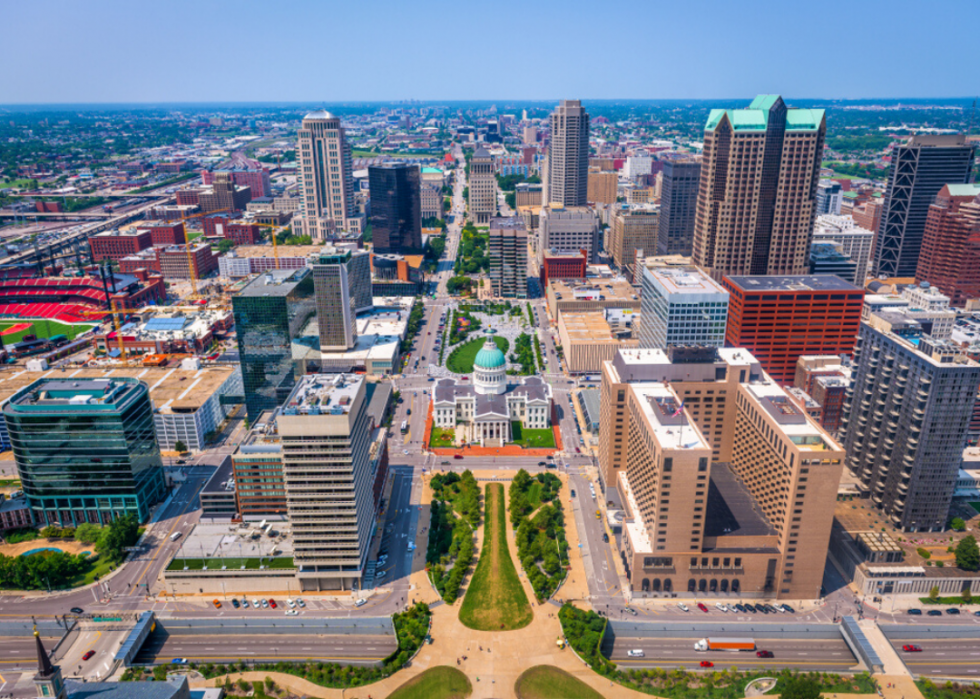
#21. Missouri
- Population below the poverty line: 837,930 (14.2% of state population)
--- Children ages 0-17 in poverty: 263,494 (19.5% of all children)
- Race/ethnicity poverty demographics:
--- Asian American: 16,626 (14.7% of Asian Americans in Missouri)
--- Black Americans: 175,186 (26.1% of Black Americans in Missouri)
--- Hispanics/Latinos: 56,254 (23.3% of Hispanics/Latinos in Missouri)
--- Native Americans/Alaskans: 5,218 (20.3% of Native Americans/Alaskans in Missouri)
--- White Americans: 553,416 (11.7% of all White Americans in Missouri)
A critical factor among Missouri’s poor is food insecurity, which means not having enough money for regular food needs: 1 in 7 Missourians are food insecure. The problem is growing among seniors especially who may not have enough retirement savings or face high medical bills.
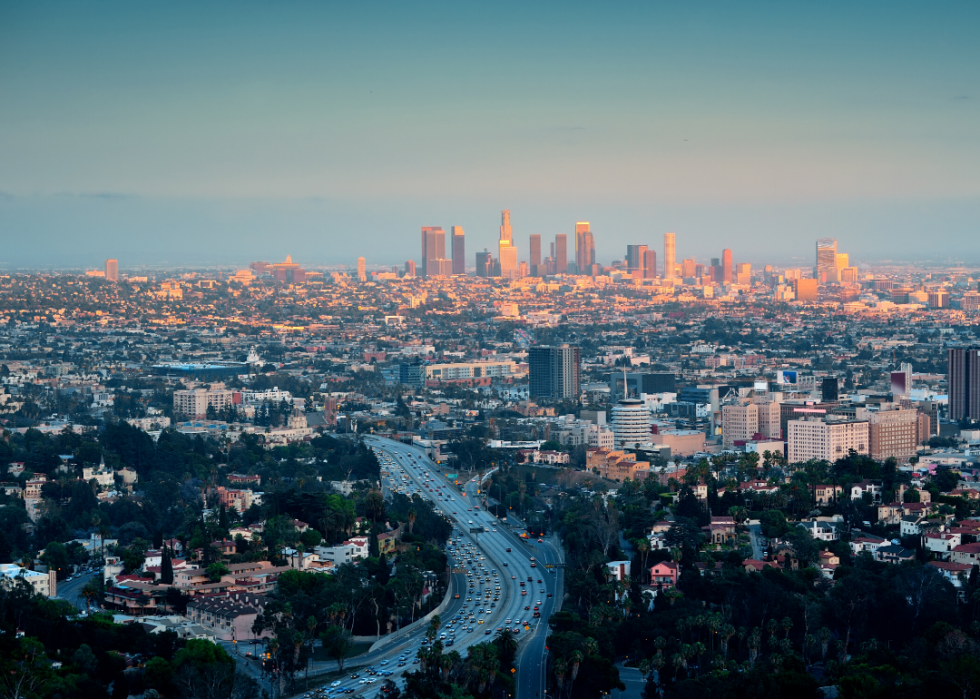
#20. California
- Population below the poverty line: 5,487,141 (14.3% of state population)
--- Children ages 0-17 in poverty: 1,747,426 (19.5% of all children)
- Race/ethnicity poverty demographics:
--- Asian American: 593,664 (10.7% of Asian Americans in California)
--- Black Americans: 475,436 (21.9% of Black Americans in California)
--- Hispanics/Latinos: 2,873,237 (19.2% of Hispanics/Latinos in California)
--- Native Americans/Alaskans: 58,630 (20.4% of Native Americans/Alaskans in California)
--- White Americans: 1,372,296 (9.5% of all White Americans in California)
In California, four out of five poor families include at least one adult who works; and 1 in 4 Latinos live in poverty, a rate twice as high as the rate among white people. The state's most significant social safety net programs include CalFresh food assistance, CalWORKs cash assistance, tax credits, housing subsidies, and school meals.
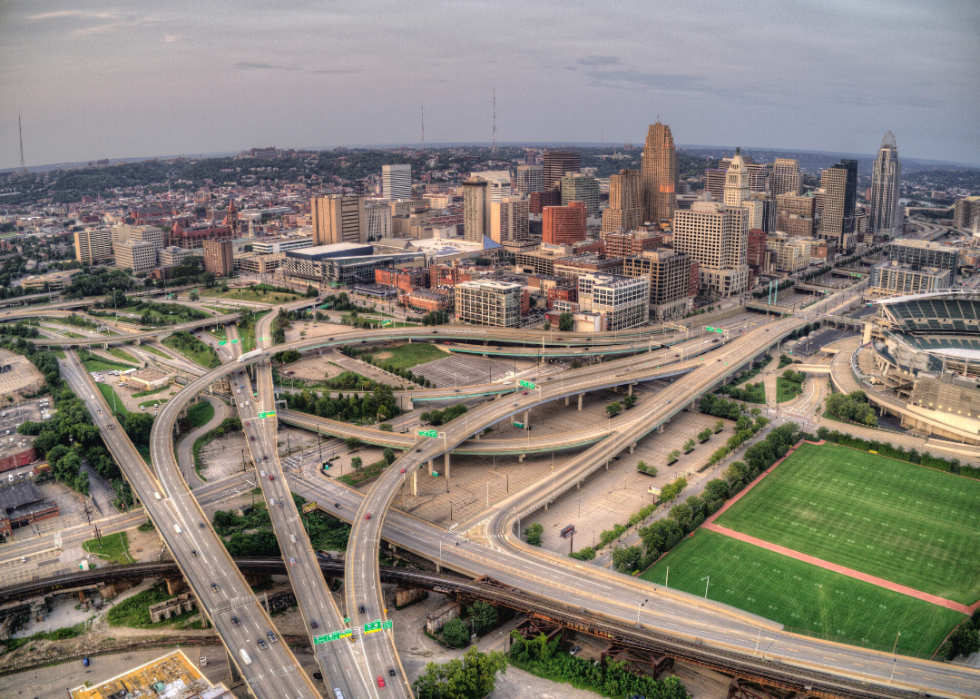
#19. Ohio
- Population below the poverty line: 1,645,986 (14.5% of state population)
--- Children ages 0-17 in poverty: 533,838 (20.8% of all children)
- Race/ethnicity poverty demographics:
--- Asian American: 33,845 (14% of Asian Americans in Ohio)
--- Black Americans: 428,990 (31.2% of Black Americans in Ohio)
--- Hispanics/Latinos: 108,209 (25.9% of Hispanics/Latinos in Ohio)
--- Native Americans/Alaskans: 5,981 (26.3% of Native Americans/Alaskans in Ohio)
--- White Americans: 1,000,494 (11.1% of all White Americans in Ohio)
Looking at Ohio’s gap between rich and poor, the average yearly income of the top 1% is about 19 times bigger than in the other 99%. A top 1% household earns in 10 days what a poverty-level family of four earns in a year. A lack of affordable housing makes matters worse. To afford a one-bedroom apartment, a worker at minimum wage would have to work 57 hours a week, according to state poverty experts.
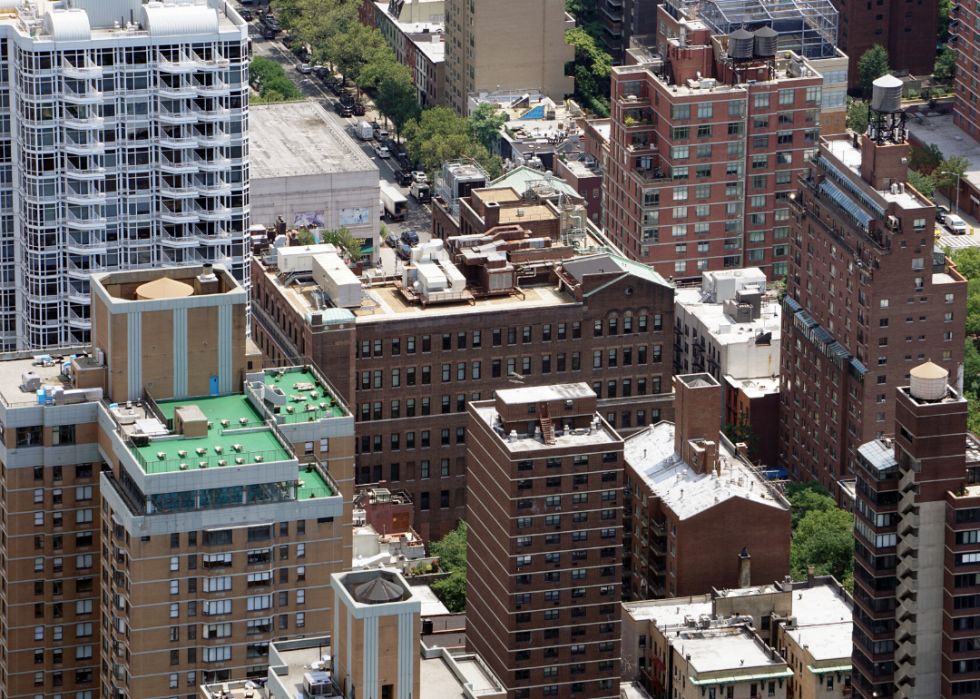
#18. New York
- Population below the poverty line: 2,797,985 (14.6% of state population)
--- Children ages 0-17 in poverty: 835,815 (20.6% of all children)
- Race/ethnicity poverty demographics:
--- Asian American: 257,423 (16.1% of Asian Americans in New York)
--- Black Americans: 638,823 (21.6% of Black Americans in New York)
--- Hispanics/Latinos: 855,022 (23.6% of Hispanics/Latinos in New York)
--- Native Americans/Alaskans: 17,928 (23.2% of Native Americans/Alaskans in New York)
--- White Americans: 1,023,946 (9.6% of all White Americans in New York)
Concern is high that the impact of the coronavirus will drive New York’s poverty rate much higher. An estimated 1.2 million people in New York City have lost their jobs since the outbreak began, comprising 27% of private sector and independent contracting jobs. It is unclear how many will be able to return as the situation eases. About two-thirds of the losses have been jobs that paid less than $40,000 annually, and almost 1 in 6 lost jobs had been held by an undocumented worker.
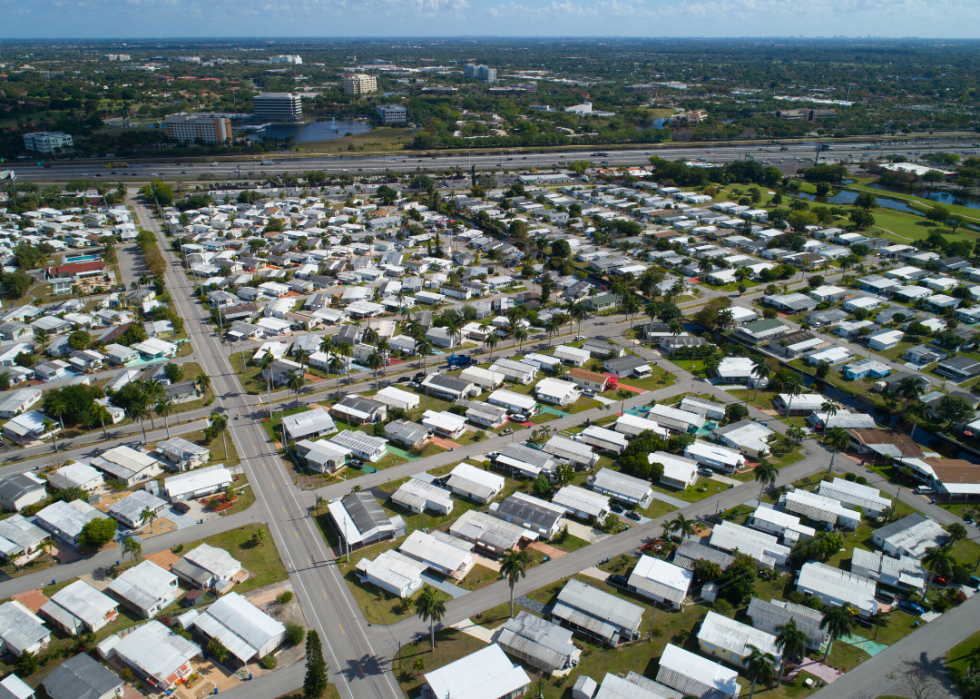
#17. Florida
- Population below the poverty line: 2,983,851 (14.8% of state population)
--- Children ages 0-17 in poverty: 870,505 (21.3% of all children)
- Race/ethnicity poverty demographics:
--- Asian American: 69,002 (12.5% of Asian Americans in Florida)
--- Black Americans: 750,616 (23.5% of Black Americans in Florida)
--- Hispanics/Latinos: 965,888 (18.9% of Hispanics/Latinos in Florida)
--- Native Americans/Alaskans: 10,177 (18.1% of Native Americans/Alaskans in Florida)
--- White Americans: 1,152,678 (10.5% of all White Americans in Florida)
Coastal areas in Florida have the state's lowest poverty rates due to the availability of jobs in the tourism industry. But rural areas and the Florida panhandle have the highest rates, such as Putnam County, east of Gainesville, where the poverty rate was nearly 25% in 2018.
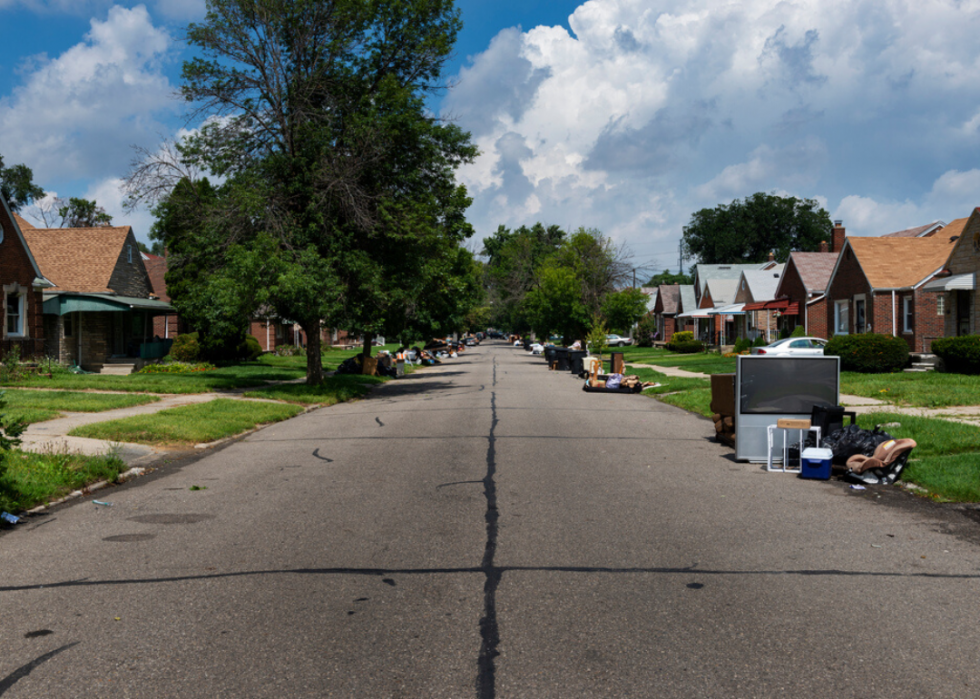
#16. Michigan
- Population below the poverty line: 1,457,008 (15% of state population)
--- Children ages 0-17 in poverty: 448,912 (20.8% of all children)
- Race/ethnicity poverty demographics:
--- Asian American: 42,493 (14.3% of Asian Americans in Michigan)
--- Black Americans: 397,762 (30.1% of Black Americans in Michigan)
--- Hispanics/Latinos: 110,015 (22.7% of Hispanics/Latinos in Michigan)
--- Native Americans/Alaskans: 11,430 (22.2% of Native Americans/Alaskans in Michigan)
--- White Americans: 840,601 (11.4% of all White Americans in Michigan)
One measure of poverty in Michigan is tracking how many students have been homeless by the time they are in fifth grade—almost 8% statewide. In two counties in rural western Michigan, more than a quarter of students have been homeless by fifth grade. Homelessness is tied to chronic absenteeism and poor school performance. Experts are concerned that homelessness will rise among families struggling financially after bans on evictions, put in place due to the pandemic, are lifted.
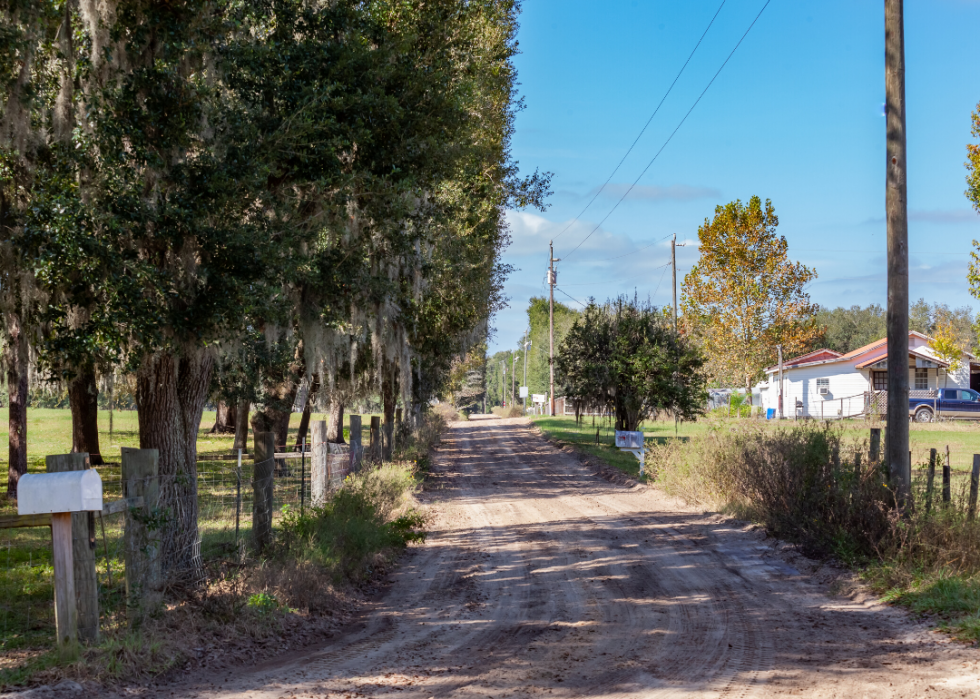
#15. North Carolina
- Population below the poverty line: 1,523,949 (15.4% of state population)
--- Children ages 0-17 in poverty: 498,013 (22% of all children)
- Race/ethnicity poverty demographics:
--- Asian American: 32,712 (11.9% of Asian Americans in North Carolina)
--- Black Americans: 493,496 (23.5% of Black Americans in North Carolina)
--- Hispanics/Latinos: 260,607 (28.5% of Hispanics/Latinos in North Carolina)
--- Native Americans/Alaskans: 29,577 (25.1% of Native Americans/Alaskans in North Carolina)
--- White Americans: 668,925 (10.6% of all White Americans in North Carolina)
In North Carolina, the poverty rate among Black people is twice as high as among white people, and it is even higher for Latinos. Adjusting for inflation, wages are stagnant and largely unchanged since 2007, while the costs of basics such as child care and housing are higher.
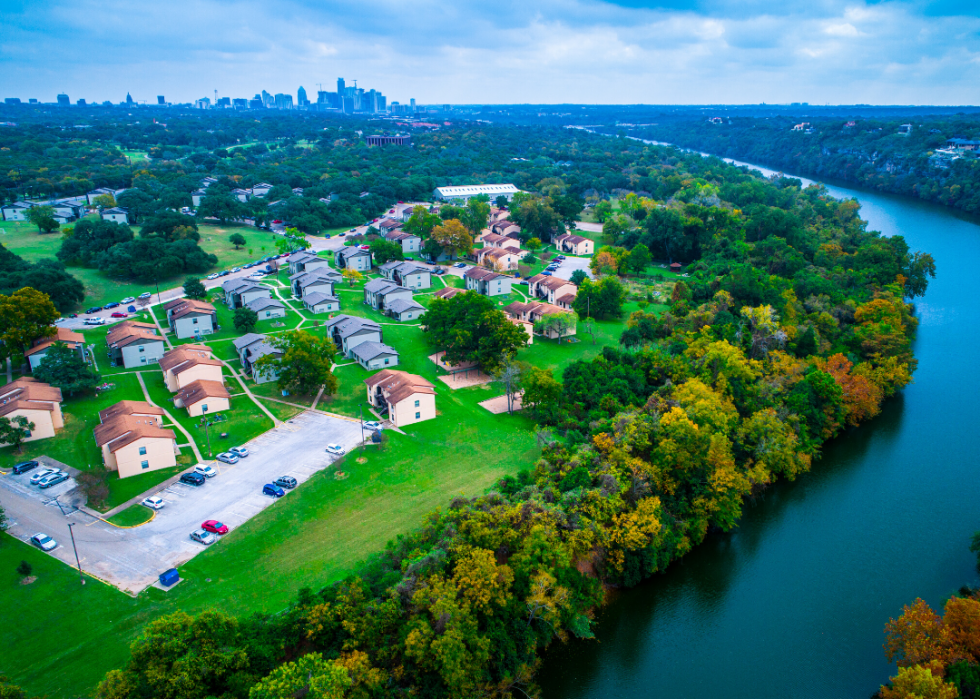
#14. Texas
- Population below the poverty line: 4,213,938 (15.5% of state population)
--- Children ages 0-17 in poverty: 1,589,798 (22% of all children)
- Race/ethnicity poverty demographics:
--- Asian American: 135,831 (10.5% of Asian Americans in Texas)
--- Black Americans: 654,449 (20.3% of Black Americans in Texas)
--- Hispanics/Latinos: 2,365,585 (22.1% of Hispanics/Latinos in Texas)
--- Native Americans/Alaskans: 23,587 (17.9% of Native Americans/Alaskans in Texas)
--- White Americans: 1,000,468 (8.7% of all White Americans in Texas)
Much of the poverty in Texas is located in communities, largely Hispanic, along the Mexican border. Rates of poverty in South Texas and in the Rio Grande Valley are twice as high as statewide rates. Poverty in McAllen and Brownsville, two cities in the Rio Grande Valley, affects about 4 in 10 children, and child poverty in Laredo, also on the border, is nearly as high.
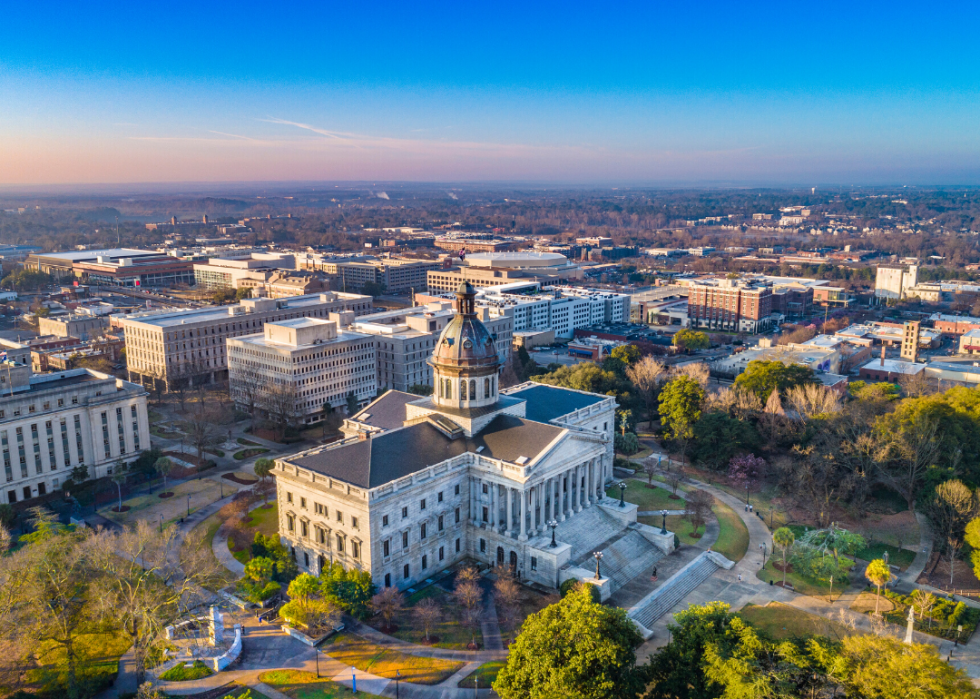
#13. South Carolina
- Population below the poverty line: 770,632 (16% of state population)
--- Children ages 0-17 in poverty: 255,186 (23.7% of all children)
- Race/ethnicity poverty demographics:
--- Asian American: 9,851 (13.5% of Asian Americans in South Carolina)
--- Black Americans: 331,866 (25.7% of Black Americans in South Carolina)
--- Hispanics/Latinos: 74,200 (28% of Hispanics/Latinos in South Carolina)
--- Native Americans/Alaskans: 4,142 (25.3% of Native Americans/Alaskans in South Carolina)
--- White Americans: 330,536 (10.7% of all White Americans in South Carolina)
One in eight of South Carolina's children live in a concentrated high poverty area, defined as a neighborhood where more than 30% of the population is poor. Such neighborhoods typically do not have good schools or healthy food supplies. Of those children, three-quarters are Black.
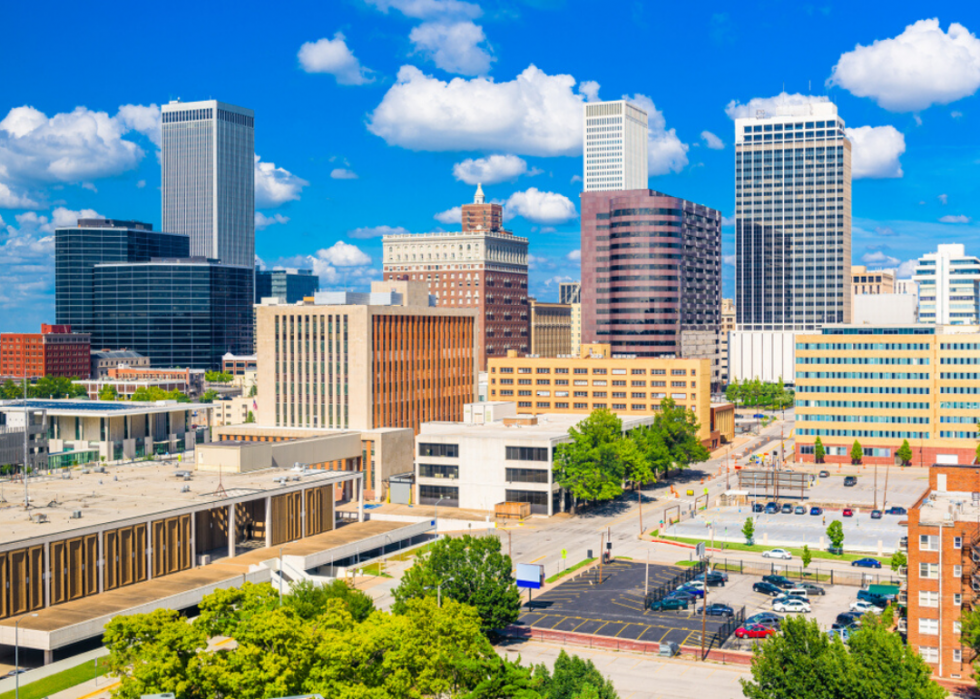
#12. Oklahoma
- Population below the poverty line: 607,810 (16% of state population)
--- Children ages 0-17 in poverty: 207,015 (22% of all children)
- Race/ethnicity poverty demographics:
--- Asian American: 12,344 (15.3% of Asian Americans in Oklahoma)
--- Black Americans: 75,990 (28.1% of Black Americans in Oklahoma)
--- Hispanics/Latinos: 98,453 (24.9% of Hispanics/Latinos in Oklahoma)
--- Native Americans/Alaskans: 60,320 (21.1% of Native Americans/Alaskans in Oklahoma)
--- White Americans: 312,854 (12.4% of all White Americans in Oklahoma)
Poverty in Oklahoma's small towns and rural areas is higher than in its metropolitan areas. Contributing factors are low education levels, low-wage jobs, poor health, lack of health insurance, and the nation's highest rate of incarceration.
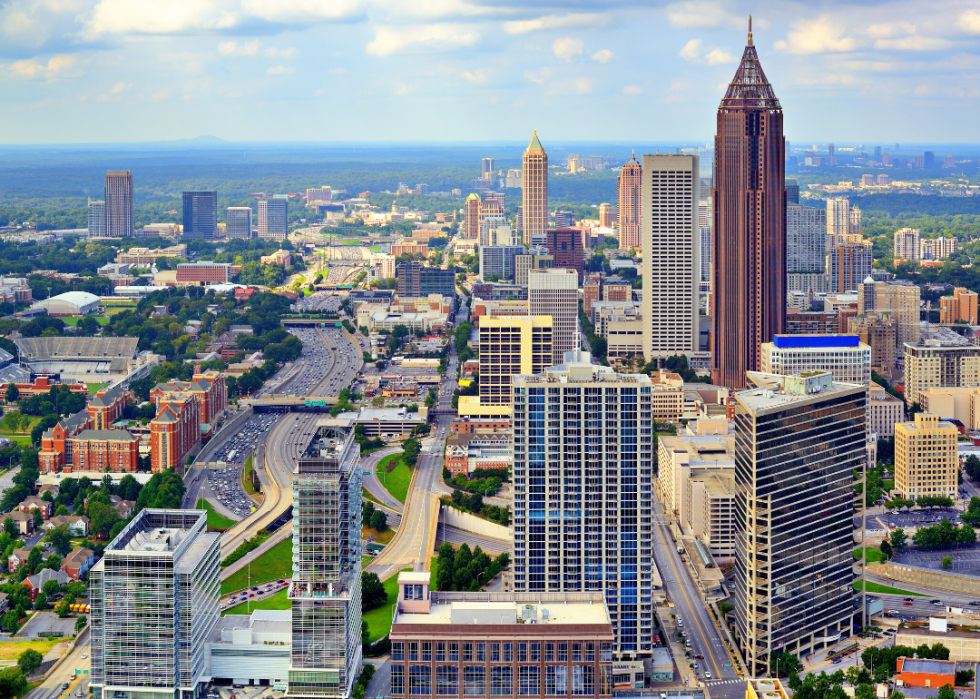
#11. Georgia
- Population below the poverty line: 1,607,714 (16% of state population)
--- Children ages 0-17 in poverty: 564,594 (22.9% of all children)
- Race/ethnicity poverty demographics:
--- Asian American: 41,991 (10.7% of Asian Americans in Georgia)
--- Black Americans: 721,534 (23.1% of Black Americans in Georgia)
--- Hispanics/Latinos: 235,650 (24.9% of Hispanics/Latinos in Georgia)
--- Native Americans/Alaskans: 8,203 (25.3% of Native Americans/Alaskans in Georgia)
--- White Americans: 569,931 (10.6% of all White Americans in Georgia)
One of the poorest counties in the nation is Georgia’s Telfair County, where the poverty rate is about 28%. The incidence of poverty is attributed to high unemployment and a lack of jobs in the rural county southeast of Macon. Telfair County is about 50% white, 40% Black, and 10% Hispanic.
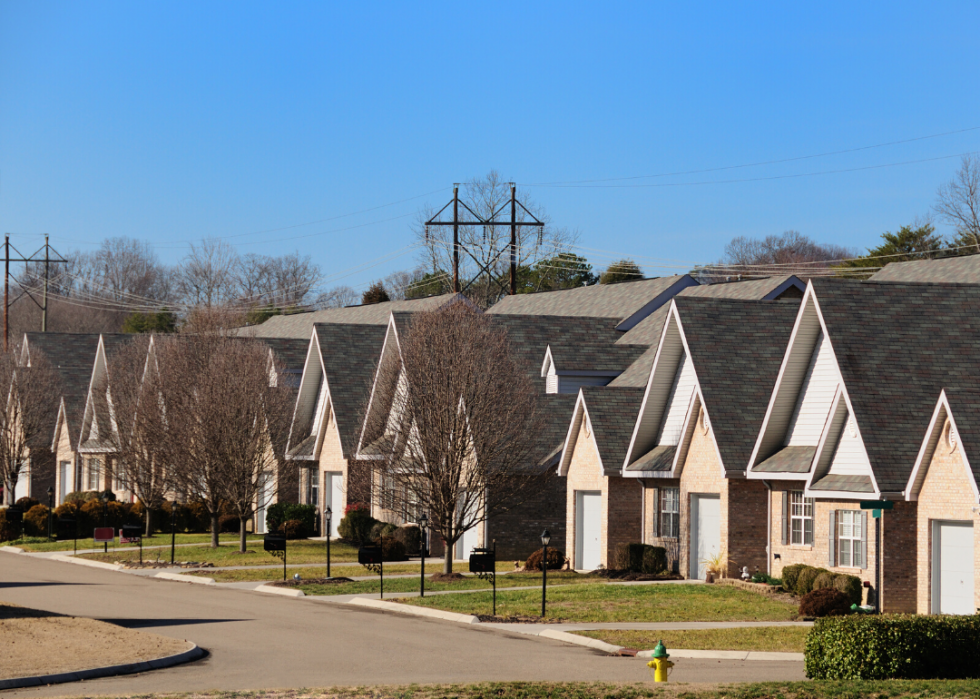
#10. Tennessee
- Population below the poverty line: 1,046,508 (16.1% of state population)
--- Children ages 0-17 in poverty: 344,360 (23.3% of all children)
- Race/ethnicity poverty demographics:
--- Asian American: 12,023 (10.9% of Asian Americans in Tennessee)
--- Black Americans: 284,688 (26.4% of Black Americans in Tennessee)
--- Hispanics/Latinos: 97,933 (28.4% of Hispanics/Latinos in Tennessee)
--- Native Americans/Alaskans: 3,585 (20.7% of Native Americans/Alaskans in Tennessee)
--- White Americans: 620,299 (12.9% of all White Americans in Tennessee)
Tennessee’s riverfront city of Memphis is one of the poorest large cities in the country, overall and among children. Its poverty rate is about 28%, and almost 1 in 2 children is poor as is 1 in 3 Black residents. Many of the city’s jobs are unskilled positions working in warehouses, and Memphis does not have an efficient public transportation system.
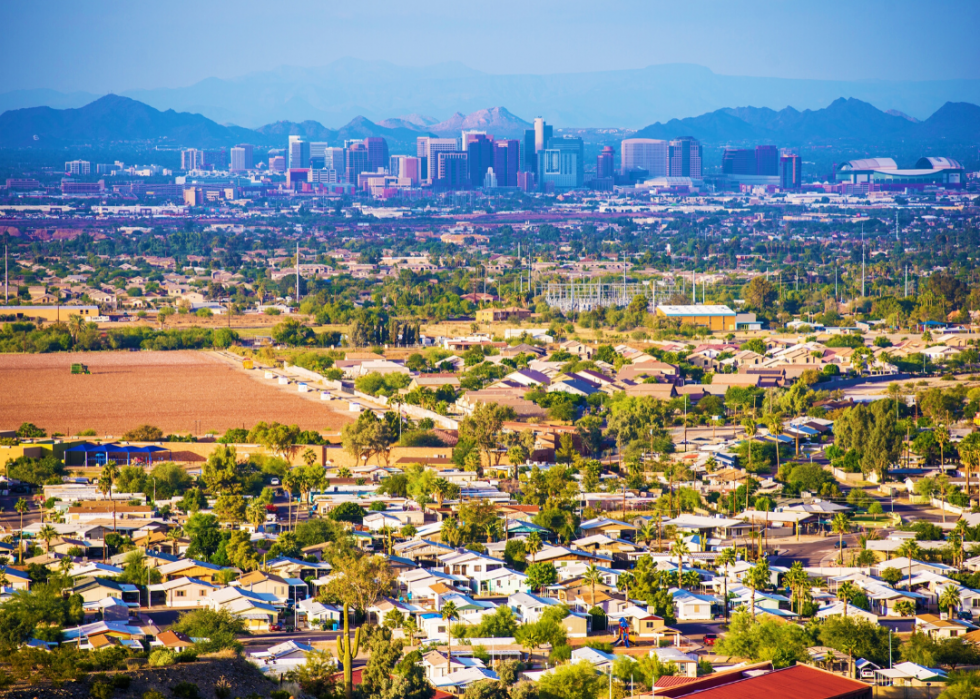
#9. Arizona
- Population below the poverty line: 1,092,192 (16.1% of state population)
--- Children ages 0-17 in poverty: 365,729 (22.8% of all children)
- Race/ethnicity poverty demographics:
--- Asian American: 29,179 (13% of Asian Americans in Arizona)
--- Black Americans: 63,103 (21.7% of Black Americans in Arizona)
--- Hispanics/Latinos: 491,036 (23.3% of Hispanics/Latinos in Arizona)
--- Native Americans/Alaskans: 104,907 (34.9% of Native Americans/Alaskans in Arizona)
--- White Americans: 392,708 (10.5% of all White Americans in Arizona)
Arizona’s poverty rate has been dropping for several years, part of its recovery from the 2008 recession, which hit the state extremely hard. But wages lag below the income level needed to cover basic costs, and half of the state’s jobs pay below $15 an hour. Housing costs have been rising, as have utility rates.
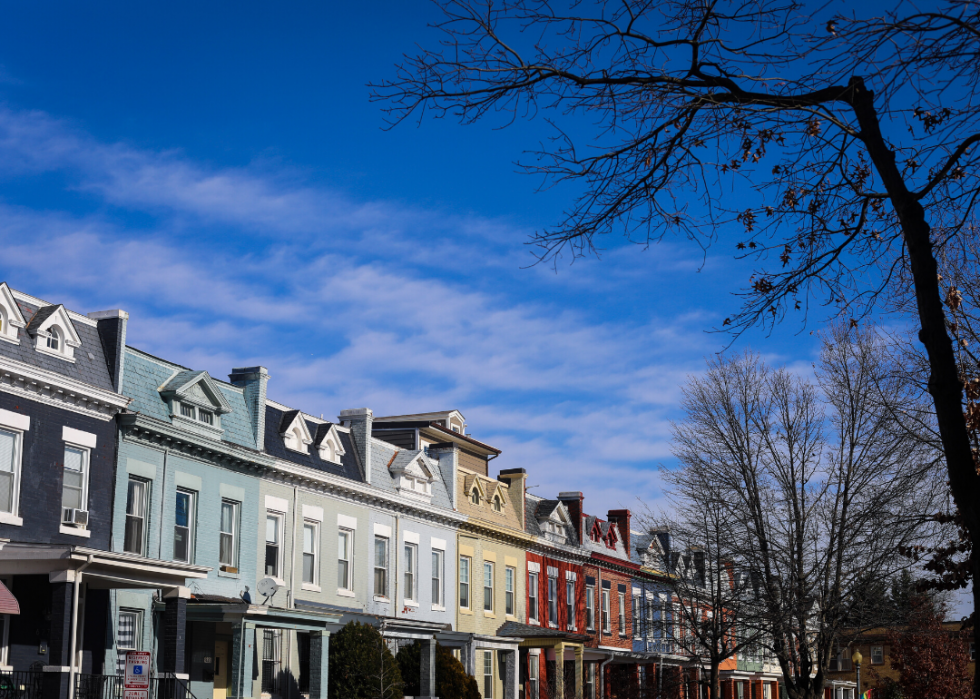
#8. Washington DC
- Population below the poverty line: 109,497 (16.8% of state population)
--- Children ages 0-17 in poverty: 29,708 (24.8% of all children)
- Race/ethnicity poverty demographics:
--- Asian American: 3,438 (14.2% of Asian Americans in District of Columbia)
--- Black Americans: 79,426 (25.7% of Black Americans in District of Columbia)
--- Hispanics/Latinos: 10,071 (14.1% of Hispanics/Latinos in District of Columbia)
--- Native Americans/Alaskans: 497 (26.2% of Native Americans/Alaskans in District of Columbia)
--- White Americans: 14,643 (6.3% of all White Americans in District of Columbia)
One of the highest rates of child poverty can be found in the nation’s capital, where some 32,000 children—1 in 4—live below the federal poverty threshold. Four in 10 live in families without a working adult, and half live with single parents.
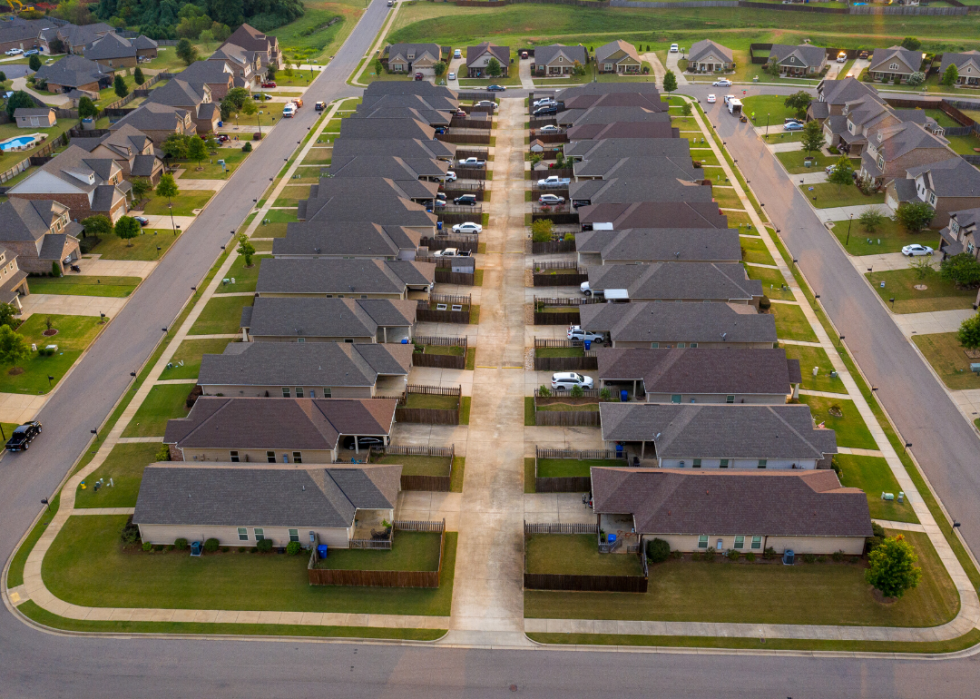
#7. Alabama
- Population below the poverty line: 829,400 (17.5% of state population)
--- Children ages 0-17 in poverty: 271,470 (25.1% of all children)
- Race/ethnicity poverty demographics:
--- Asian American: 8,165 (12.9% of Asian Americans in Alabama)
--- Black Americans: 354,009 (28.4% of Black Americans in Alabama)
--- Hispanics/Latinos: 63,883 (32.2% of Hispanics/Latinos in Alabama)
--- Native Americans/Alaskans: 4,169 (16.8% of Native Americans/Alaskans in Alabama)
--- White Americans: 381,475 (12.2% of all White Americans in Alabama)
Poverty rates in Alabama differ along racial lines. About 12% of white people live in poverty, compared with more than 28% of Black people and 32% of Latino people. The median income in a white household is $55,690 and $32,188 in a Black household. One of the nation's counties showing a big jump in hardship has been Alabama's Bullock County, where the poverty rate hit 42.5% in 2018. The population in the county southeast of Montgomery is mostly Black, and its jobs are mostly in agriculture and in poultry processing.
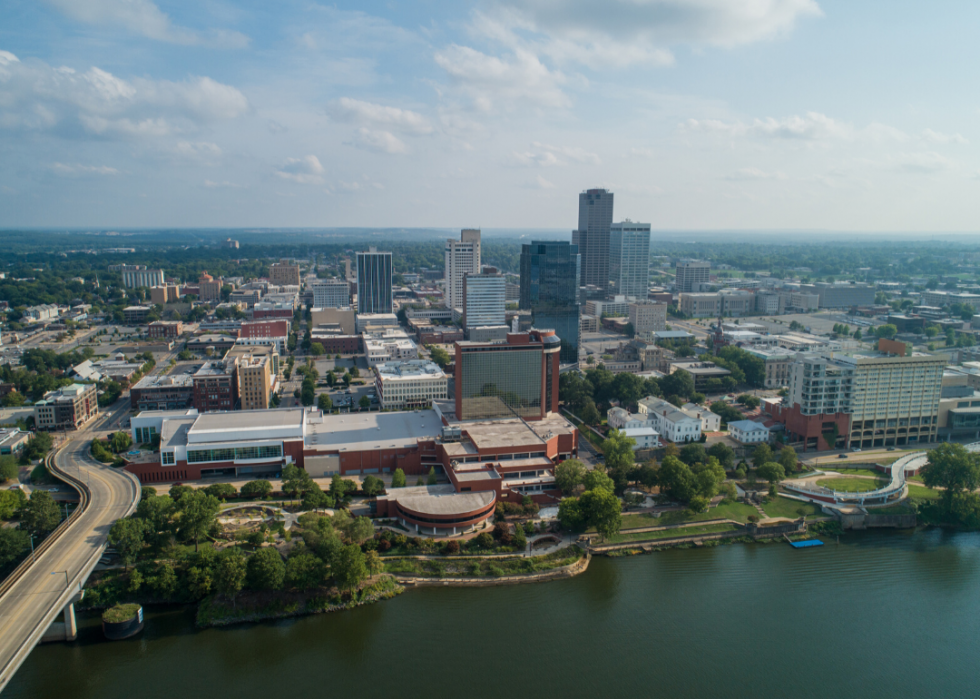
#6. Arkansas
- Population below the poverty line: 510,337 (17.6% of state population)
--- Children ages 0-17 in poverty: 171,109 (24.7% of all children)
- Race/ethnicity poverty demographics:
--- Asian American: 6,116 (14.2% of Asian Americans in Arkansas)
--- Black Americans: 133,977 (30.5% of Black Americans in Arkansas)
--- Hispanics/Latinos: 59,173 (27.5% of Hispanics/Latinos in Arkansas)
--- Native Americans/Alaskans: 4,630 (23.9% of Native Americans/Alaskans in Arkansas)
--- White Americans: 290,844 (13.8% of all White Americans in Arkansas)
The female poverty rate in Arkansas is nearly 1 in 6—almost 289,000 women. It’s about 1 in 4 children in nursery school, in elementary school, and in middle school. Statewide, the poverty rate hit a high of more than 24% in 1981 and has been as low as 13.8% since then.
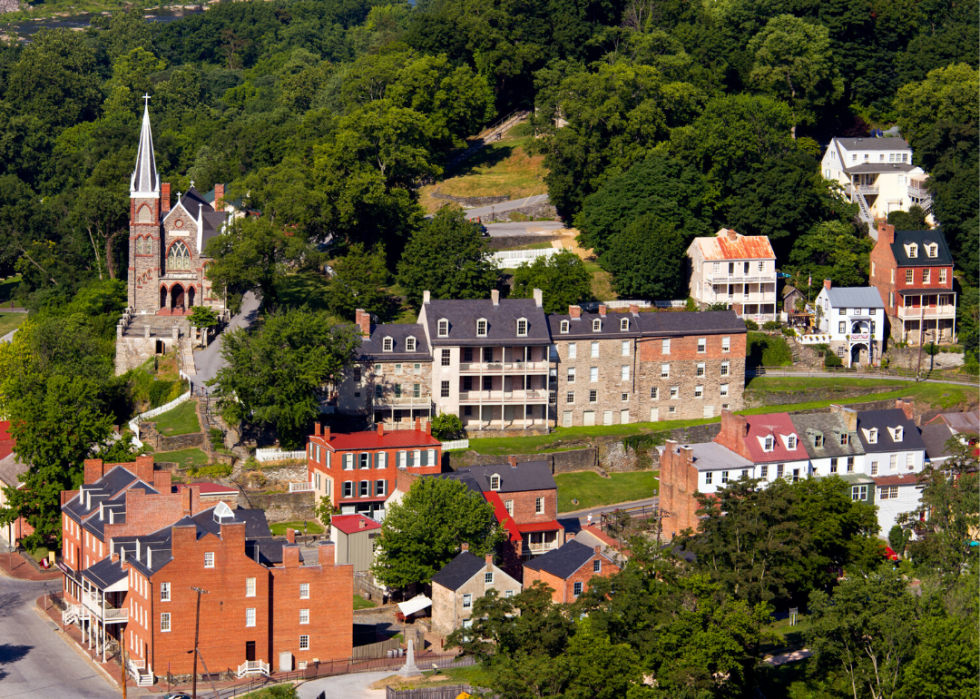
#5. West Virginia
- Population below the poverty line: 315,464 (17.8% of state population)
--- Children ages 0-17 in poverty: 88,074 (24.2% of all children)
- Race/ethnicity poverty demographics:
--- Asian American: 2,573 (18.2% of Asian Americans in West Virginia)
--- Black Americans: 17,459 (29.6% of Black Americans in West Virginia)
--- Hispanics/Latinos: 5,793 (23% of Hispanics/Latinos in West Virginia)
--- Native Americans/Alaskans: 670 (19.3% of Native Americans/Alaskans in West Virginia)
--- White Americans: 280,315 (17% of all White Americans in West Virginia)
An array of factors has fueled poverty in West Virginia, reaching back to the 1960s when coal mines closed and people left. Other well-paying jobs failed to materialize. More than 10,000 students are homeless, and some 7,000 children are in the foster-care system, mostly from families of drug abusers. Even the state’s geography of hills and hollows serves to isolate residents from accessible job opportunities and internet access.
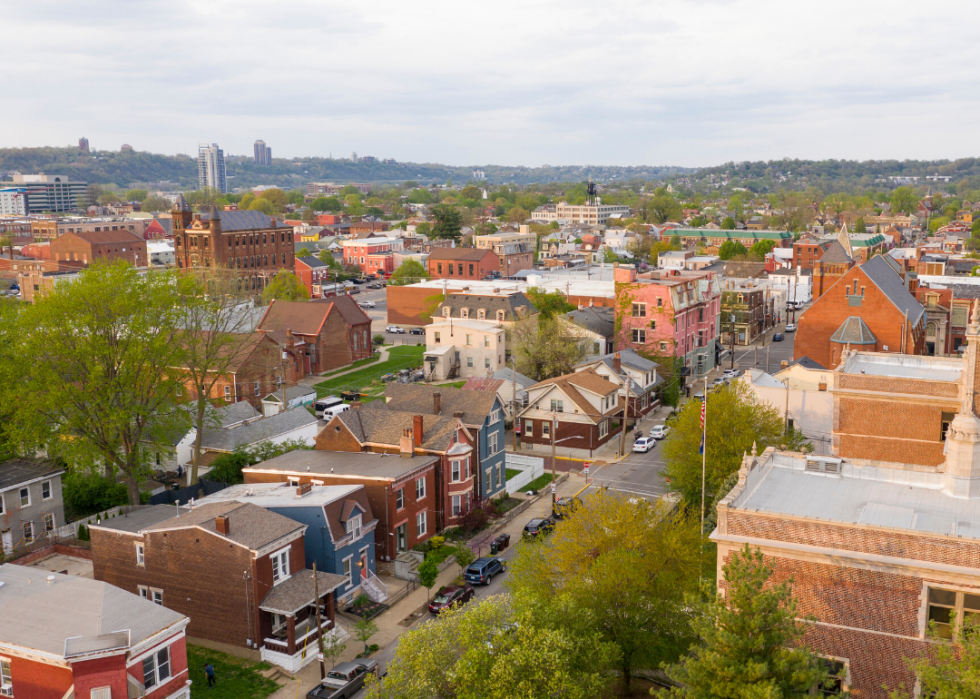
#4. Kentucky
- Population below the poverty line: 772,080 (17.9% of state population)
--- Children ages 0-17 in poverty: 241,325 (24.4% of all children)
- Race/ethnicity poverty demographics:
--- Asian American: 10,211 (16.6% of Asian Americans in Kentucky)
--- Black Americans: 97,178 (29.2% of Black Americans in Kentucky)
--- Hispanics/Latinos: 44,053 (28.8% of Hispanics/Latinos in Kentucky)
--- Native Americans/Alaskans: 2,628 (27.9% of Native Americans/Alaskans in Kentucky)
--- White Americans: 596,656 (16.3% of all White Americans in Kentucky)
The role of education plays out in Kentucky’s high poverty rate. In several counties, only about 1 in 10 people has a college degree, a third of the rate nationwide. In Knox County, a third of residents do not have high school diplomas, and 1 in 5 households makes less than $10,000 a year. One of the poorest counties nationwide is Kentucky’s McCreary County, where dozens of coal mines closed. Its poverty rate is 41%, and half the households make less than $20,000 a year.
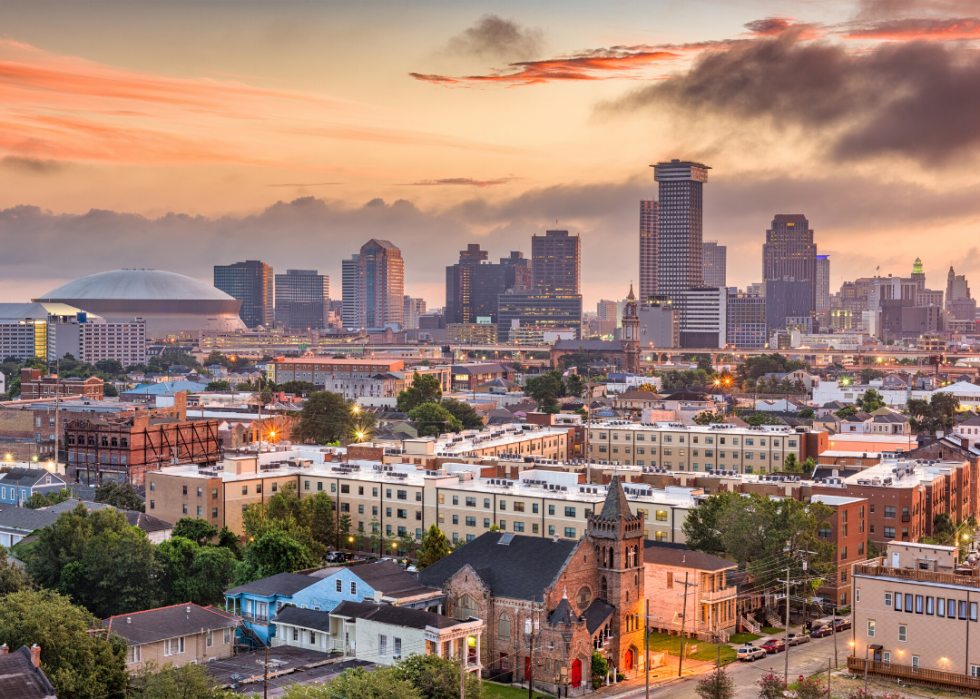
#3. Louisiana
- Population below the poverty line: 878,394 (19.4% of state population)
--- Children ages 0-17 in poverty: 299,734 (27.4% of all children)
- Race/ethnicity poverty demographics:
--- Asian American: 11,962 (15.2% of Asian Americans in Louisiana)
--- Black Americans: 465,546 (32.3% of Black Americans in Louisiana)
--- Hispanics/Latinos: 51,315 (22.6% of Hispanics/Latinos in Louisiana)
--- Native Americans/Alaskans: 6,182 (24.1% of Native Americans/Alaskans in Louisiana)
--- White Americans: 326,987 (12.2% of all White Americans in Louisiana)
Beyond poverty lies deep poverty, which means an income of less than half the federal poverty threshold. For a single person, it’s about $500 a month. More than 8% of Louisiana residents live in deep poverty.
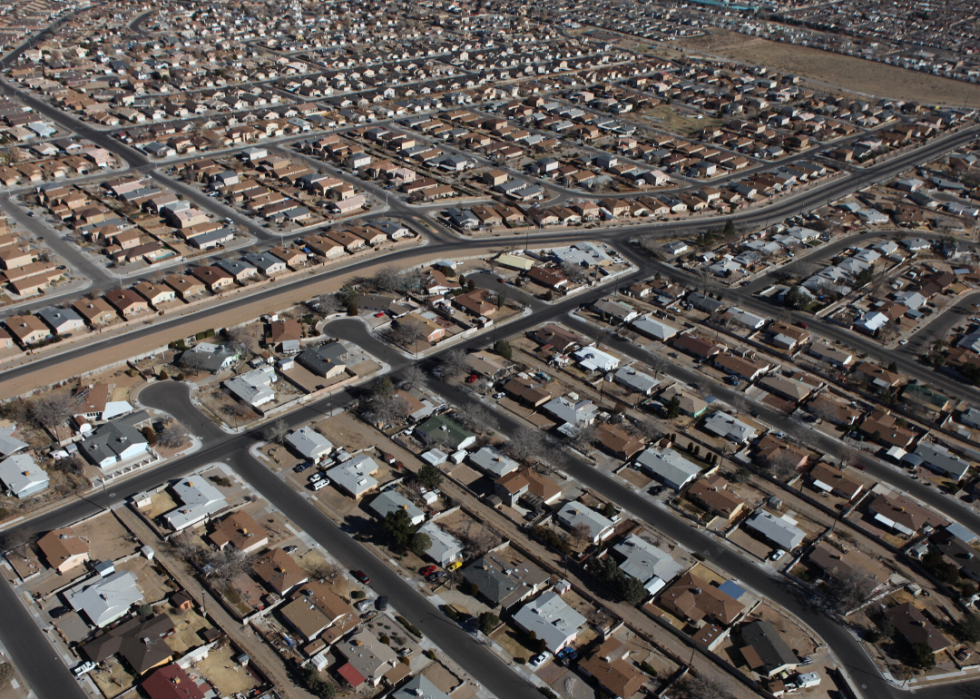
#2. New Mexico
- Population below the poverty line: 410,389 (20% of state population)
--- Children ages 0-17 in poverty: 136,792 (28.1% of all children)
- Race/ethnicity poverty demographics:
--- Asian American: 2,985 (9.7% of Asian Americans in New Mexico)
--- Black Americans: 9,417 (23.4% of Black Americans in New Mexico)
--- Hispanics/Latinos: 238,245 (23.9% of Hispanics/Latinos in New Mexico)
--- Native Americans/Alaskans: 64,702 (33% of Native Americans/Alaskans in New Mexico)
--- White Americans: 94,636 (12.2% of all White Americans in New Mexico)
Child poverty is high in New Mexico, affecting 30% of Hispanic children and 41% of Native American children. Advocates and lawmakers have called for a number of anti-poverty measures including early childhood education and expanded school meals as well as improved broadband access to help with job creation.
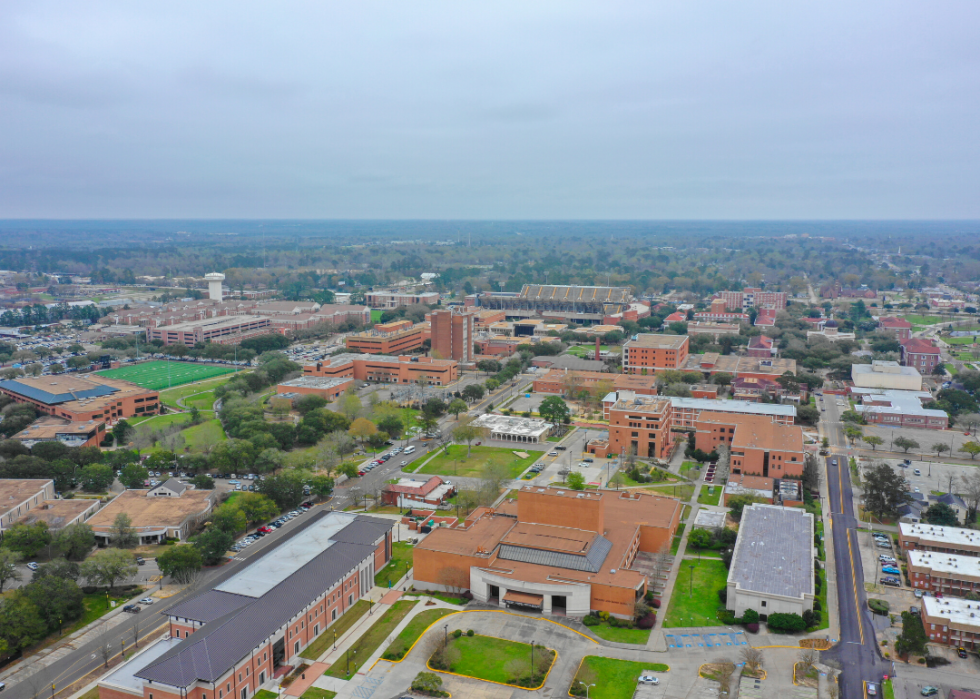
#1. Mississippi
- Population below the poverty line: 599,795 (20.8% of state population)
--- Children ages 0-17 in poverty: 206,763 (29.2% of all children)
- Race/ethnicity poverty demographics:
--- Asian American: 3,748 (13.7% of Asian Americans in Mississippi)
--- Black Americans: 353,470 (32.7% of Black Americans in Mississippi)
--- Hispanics/Latinos: 21,702 (25.9% of Hispanics/Latinos in Mississippi)
--- Native Americans/Alaskans: 4,136 (31.3% of Native Americans/Alaskans in Mississippi)
--- White Americans: 207,939 (12.6% of all White Americans in Mississippi)
Within the poorest state is the poorest county—Holmes—where the poverty rate is 46.5%. A typical household in the mostly Black county in north central Mississippi earns less than half of what households earn in the rest of the state. With few job opportunities, the county’s population dropped by nearly 5% in the past five years.



